Tom's Hardware Verdict
The Thermaltake PF1 850 has decent overall performance, but it doesn't standout in a category with stiff competition.
Pros
- +
Full power at 47 degrees Celsius
- +
Decent (but not top-notch) overall performance
- +
Efficient
- +
Higher than 70% efficiency with 2% load
- +
Quiet under normal conditions
- +
Long enough hold-up time
- +
Low inrush current with 115V
- +
High number of connectors
- +
Fully modular
Cons
- -
Power Factor readings are not so high
- -
Transient response could be better
- -
No MOV in the transient filter
Why you can trust Tom's Hardware
The Thermaltake Toughpower PF1 with 850-watt max power is a decent PSU, but it cannot compete with the leaders in this price range (>$170), where the competition is stiff. The Corsair HX850 and the Seasonic Focus Plus Platinum with similar capacity offer higher performance, so the Toughpower PF1 850 isn't among our best PSU picks. With a notable discount, this unit would be much more attractive since it packs many good features.
We have already taken a look at the Toughpower PF1 with 750W max power, which left a good impression. It is time now for the strongest member of the line to prove its worth. With 850W capacity, this PSU can handle a power-hungry CPU and GPU combo, for example, an Intel i9-10900K or AMD Ryzen 9 5950x and an Nvidia RTX 3080 or AMD RX 6800XT.
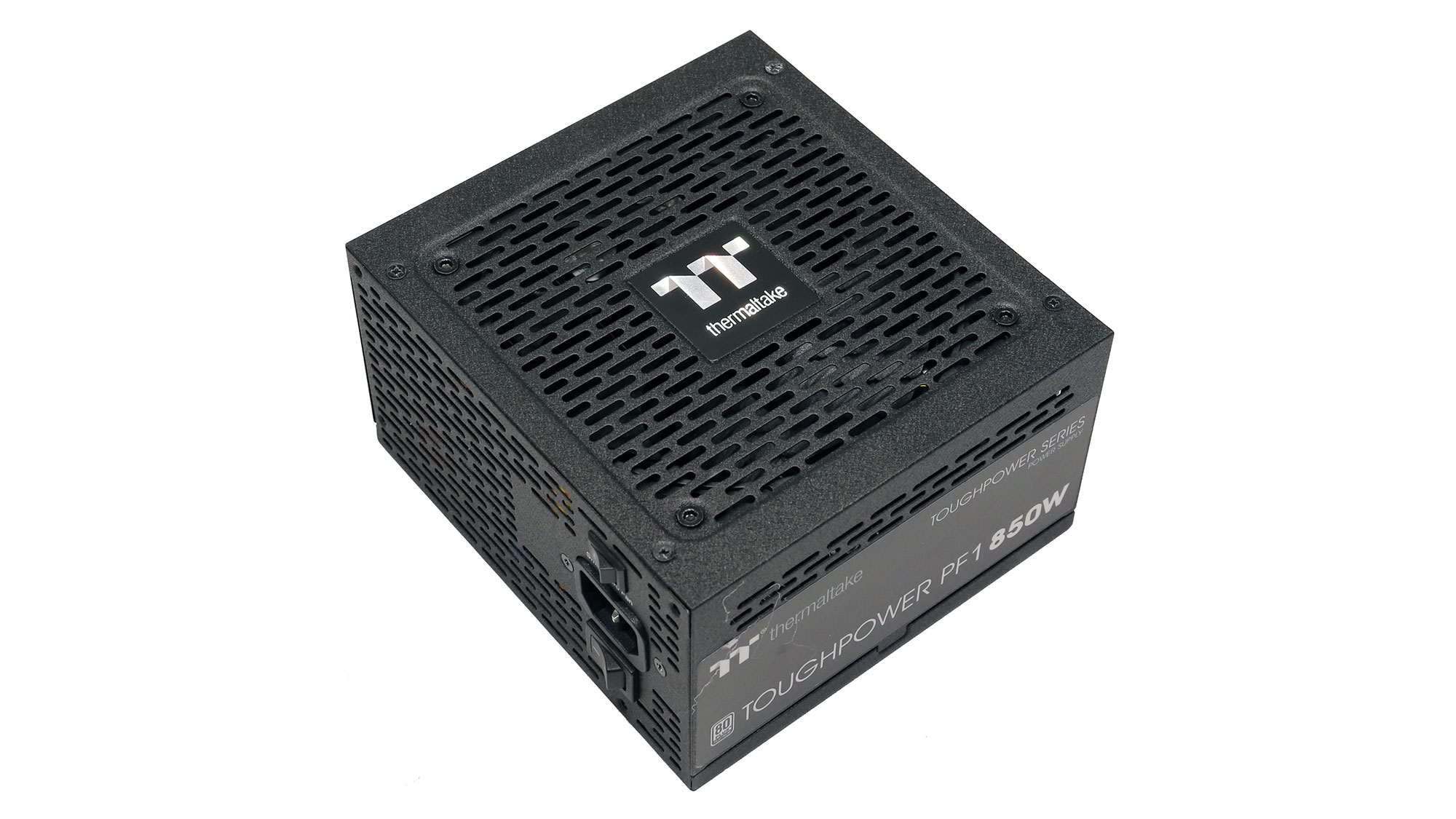
Product Photos
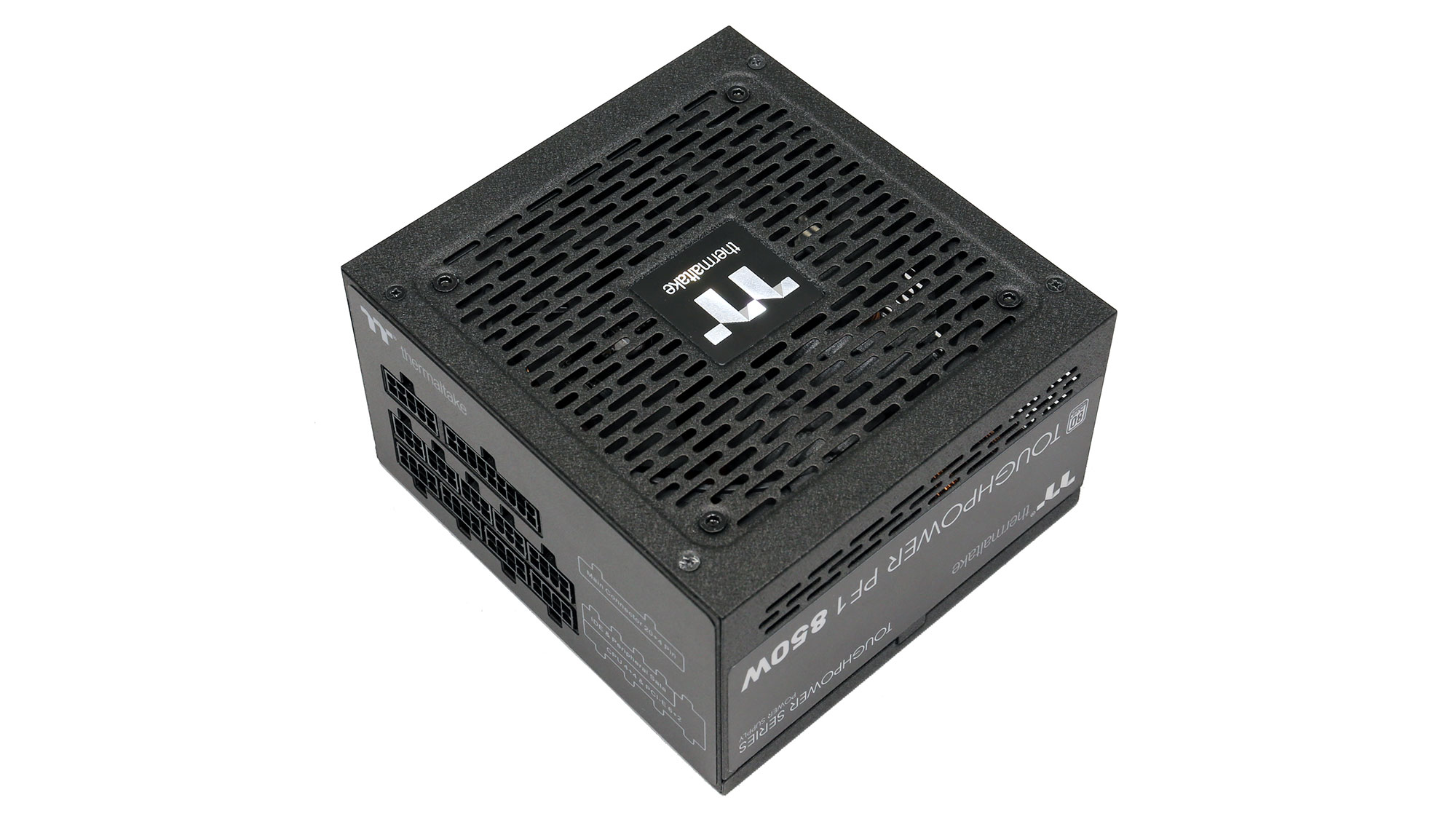

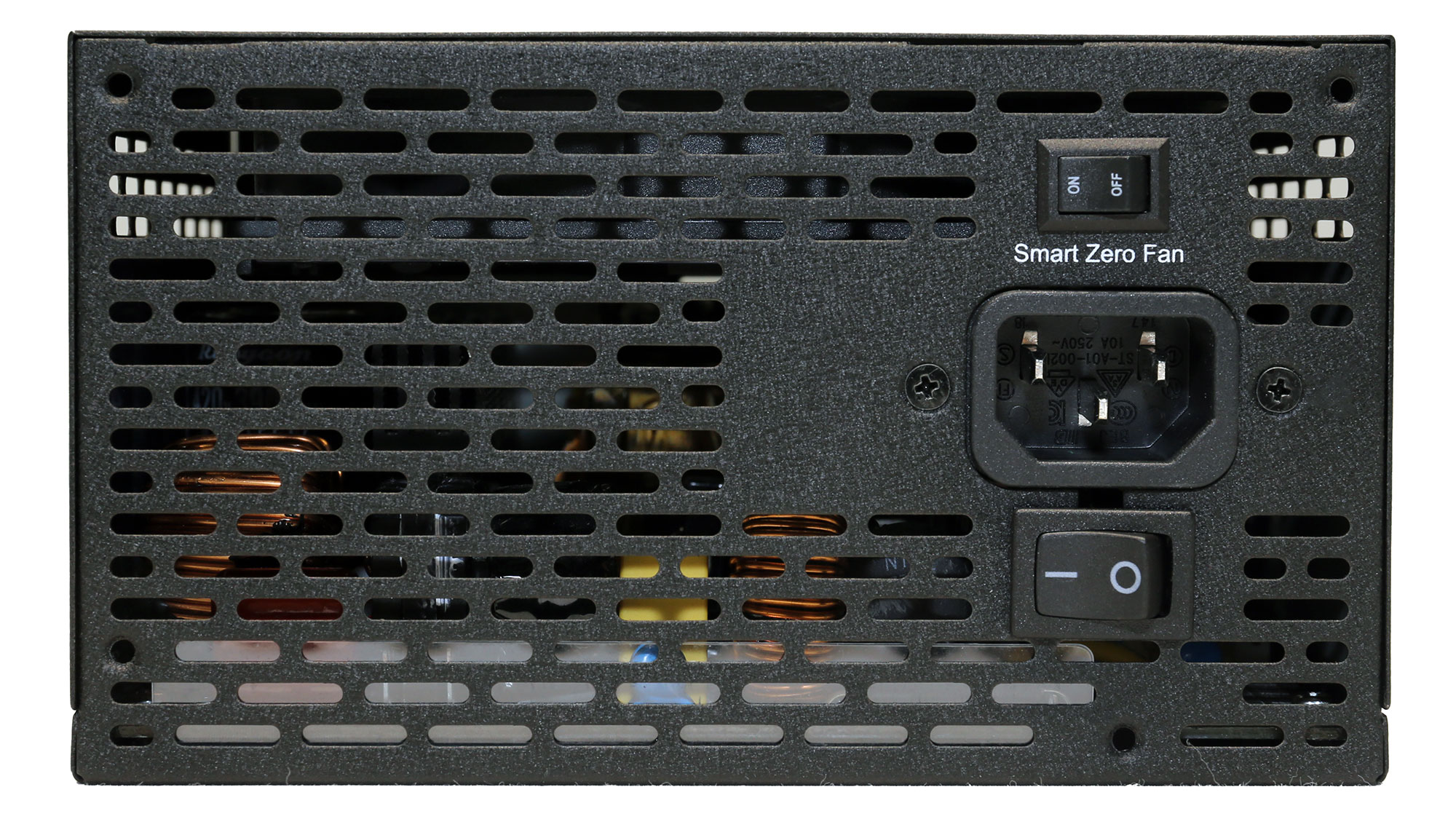
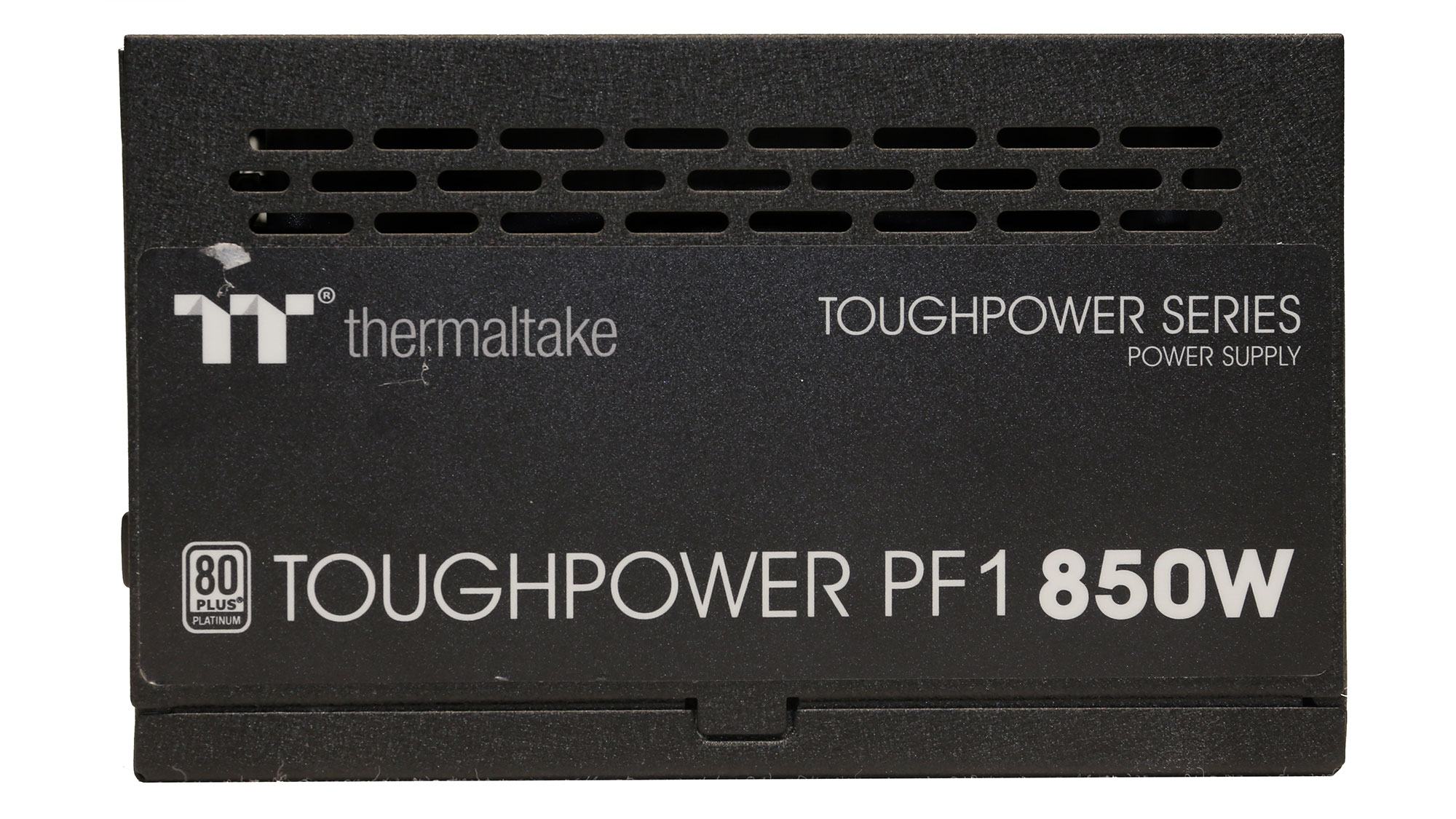

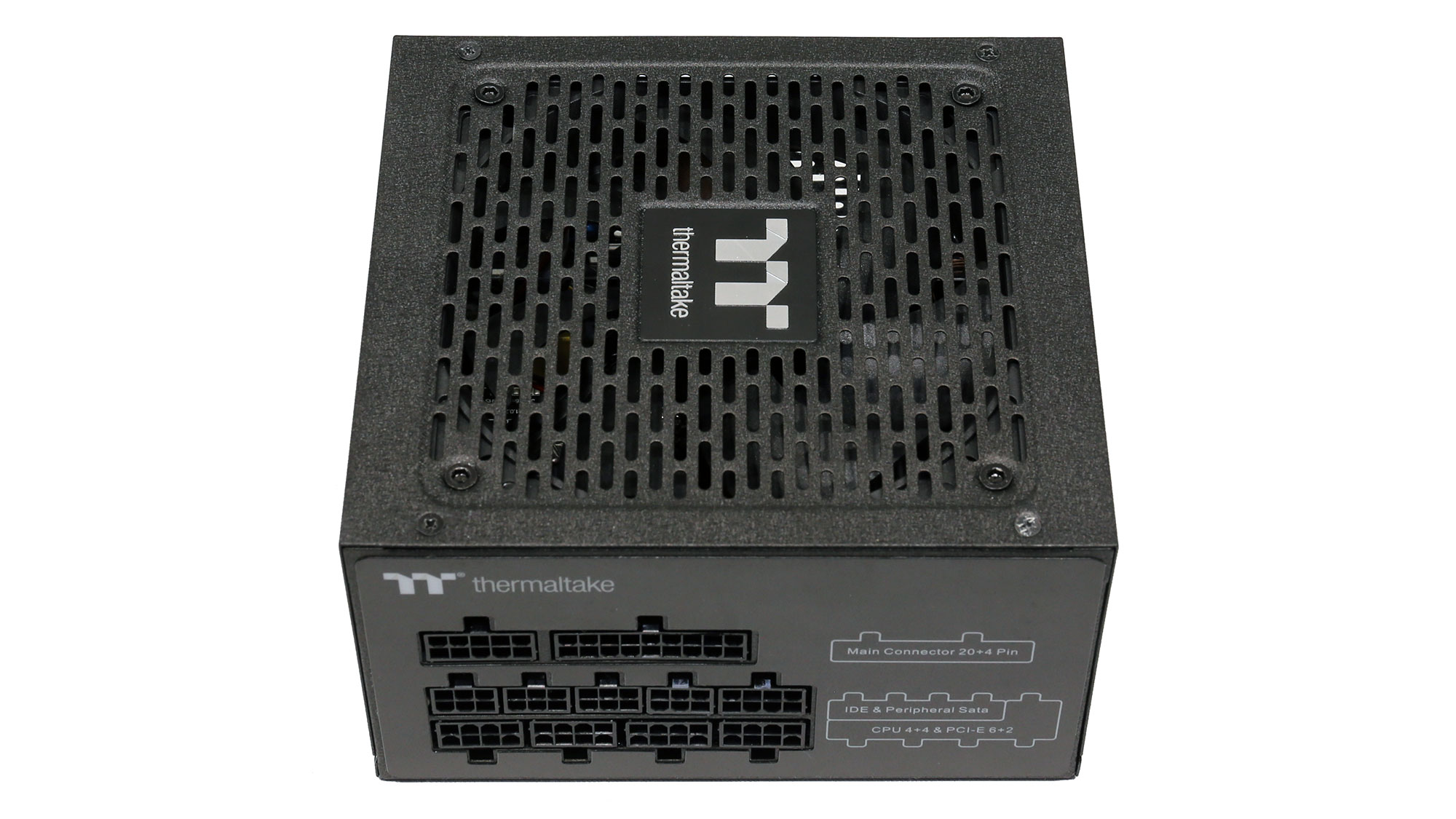
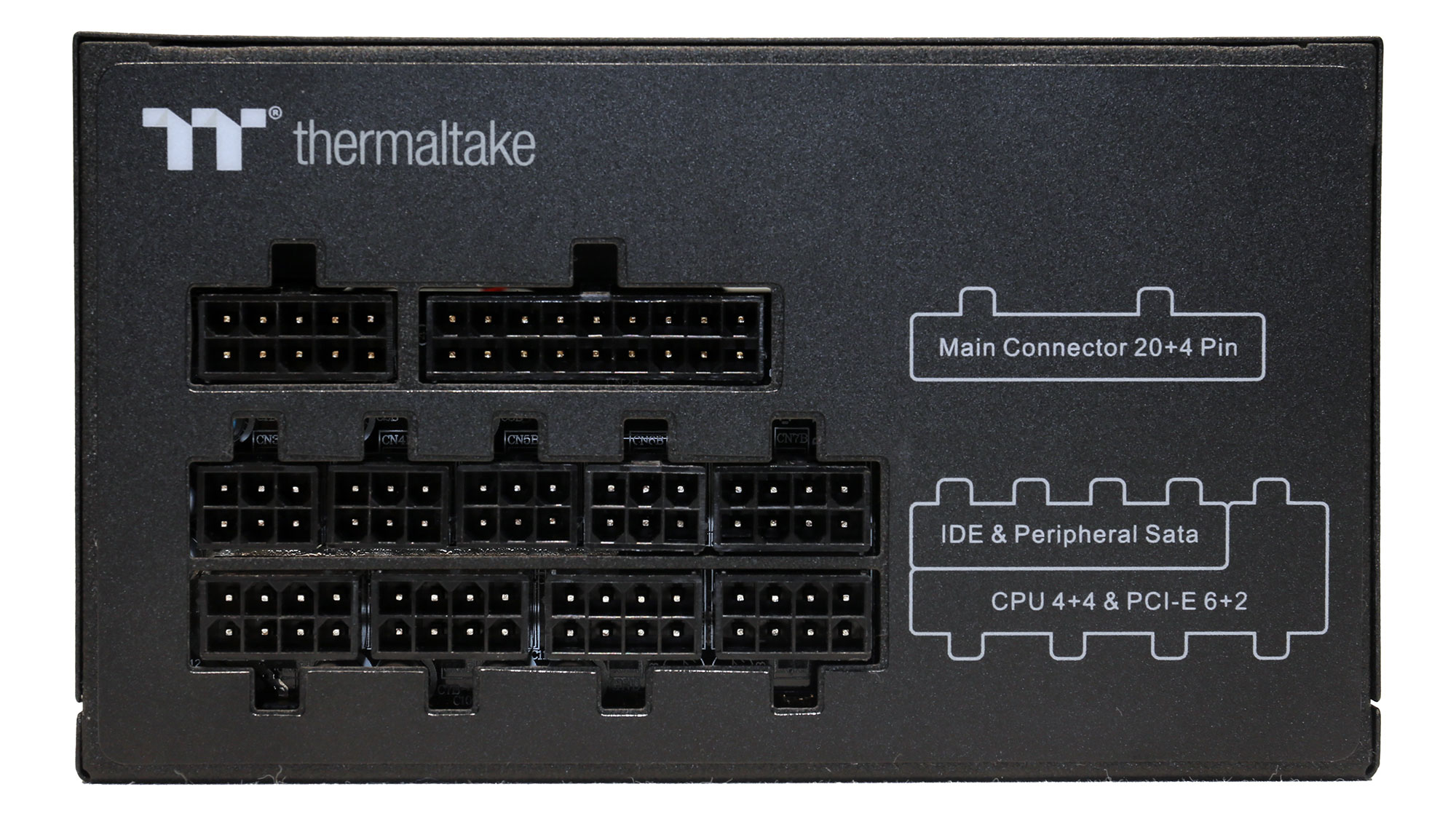
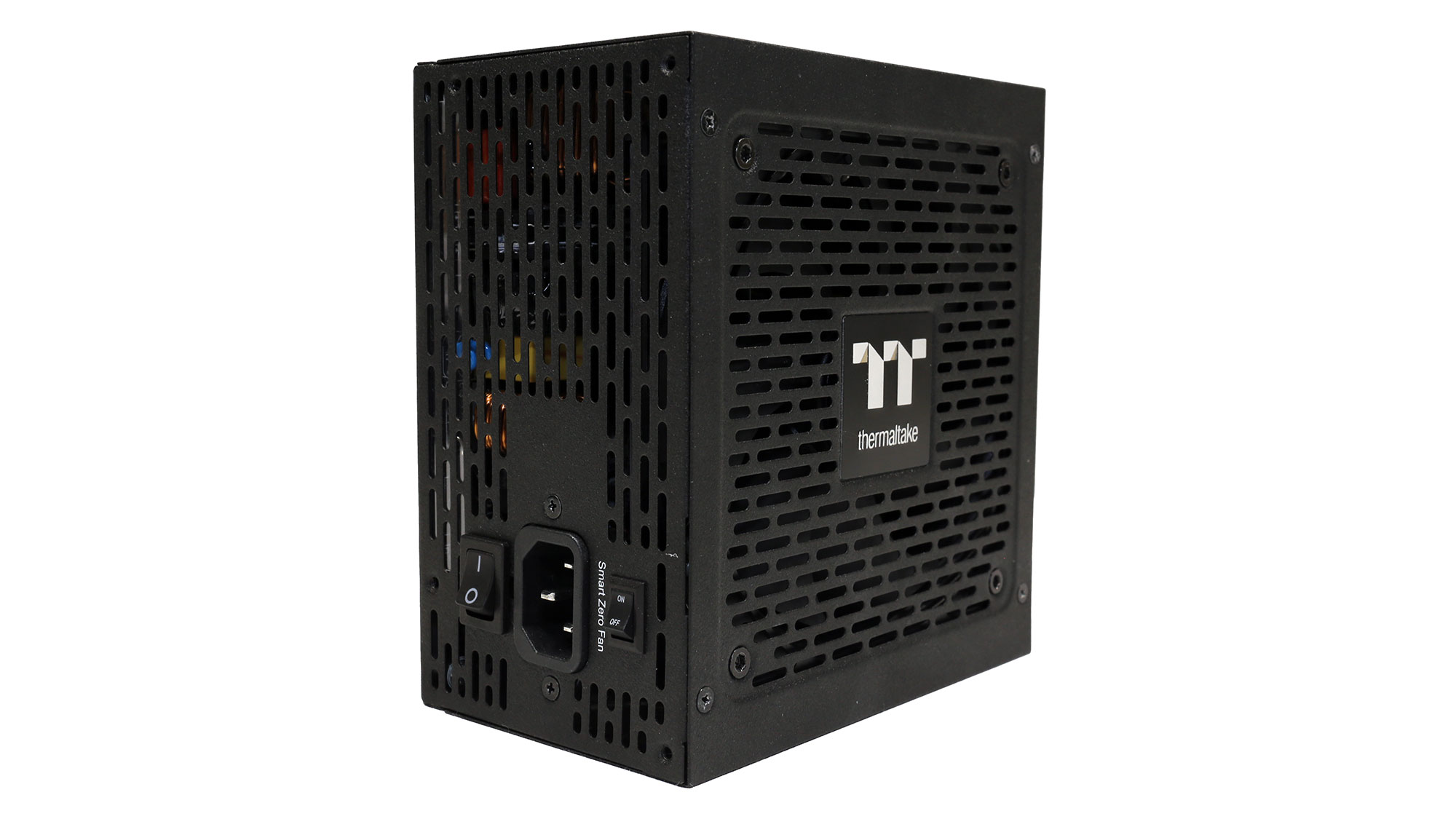

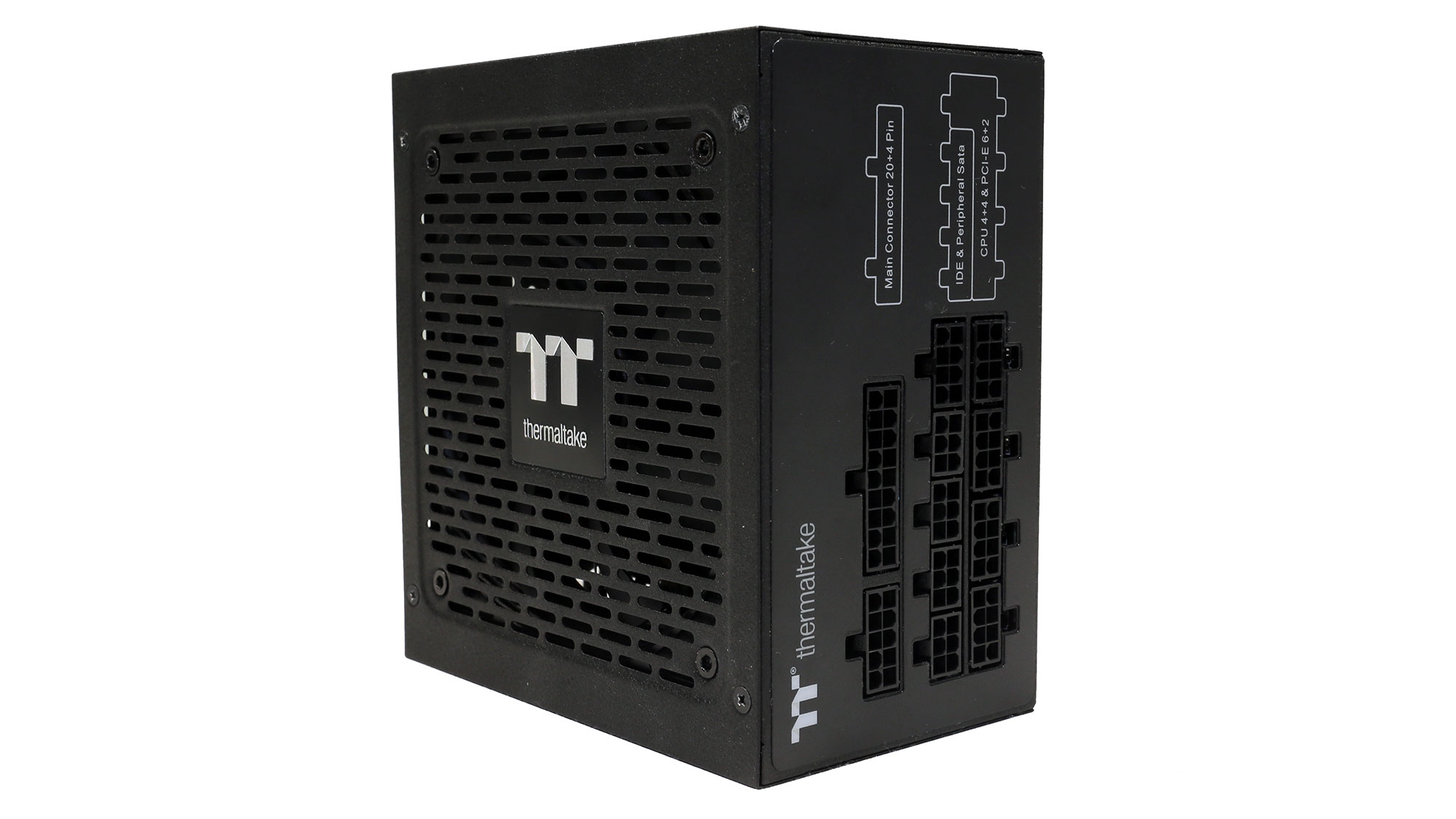
HKC makes all Thermaltake PF1 units. This OEM is not as popular as CWT, Great Wall, FSP, and the other large manufacturers, and it is mostly enrolled in mainstream categories. That said, it is nice to see a new player in the high-end category since it breaks the monotony and provides more choices to buyers. It has to offer good performance though, to meet the competition in this category.
On the 80 PLUS scale, the PF1 850 is classified as Platinum, while in Cybenetics, it earns the ETA-A and LAMBDA-A- efficiency and noise ratings. All cables are modular, and the cooling fan uses a hydraulic bearing with long life under normal operating temperatures. Finally, the PSU features semi-passive operation, meaning that its cooling fan doesn't spin at low loads to keep the noise output low. You can toggle this mode off if you want the fan to run constantly.
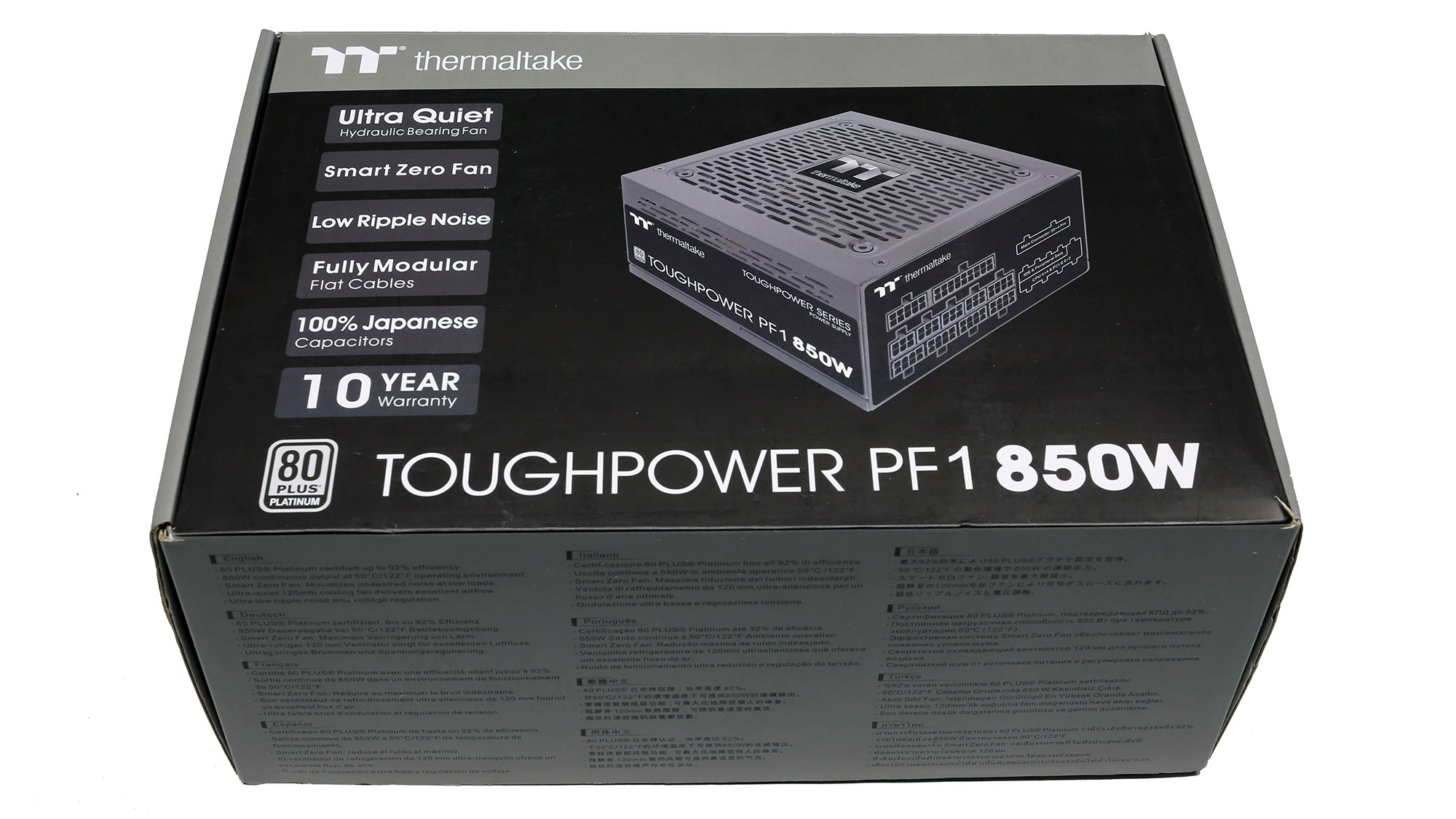
Product Photos



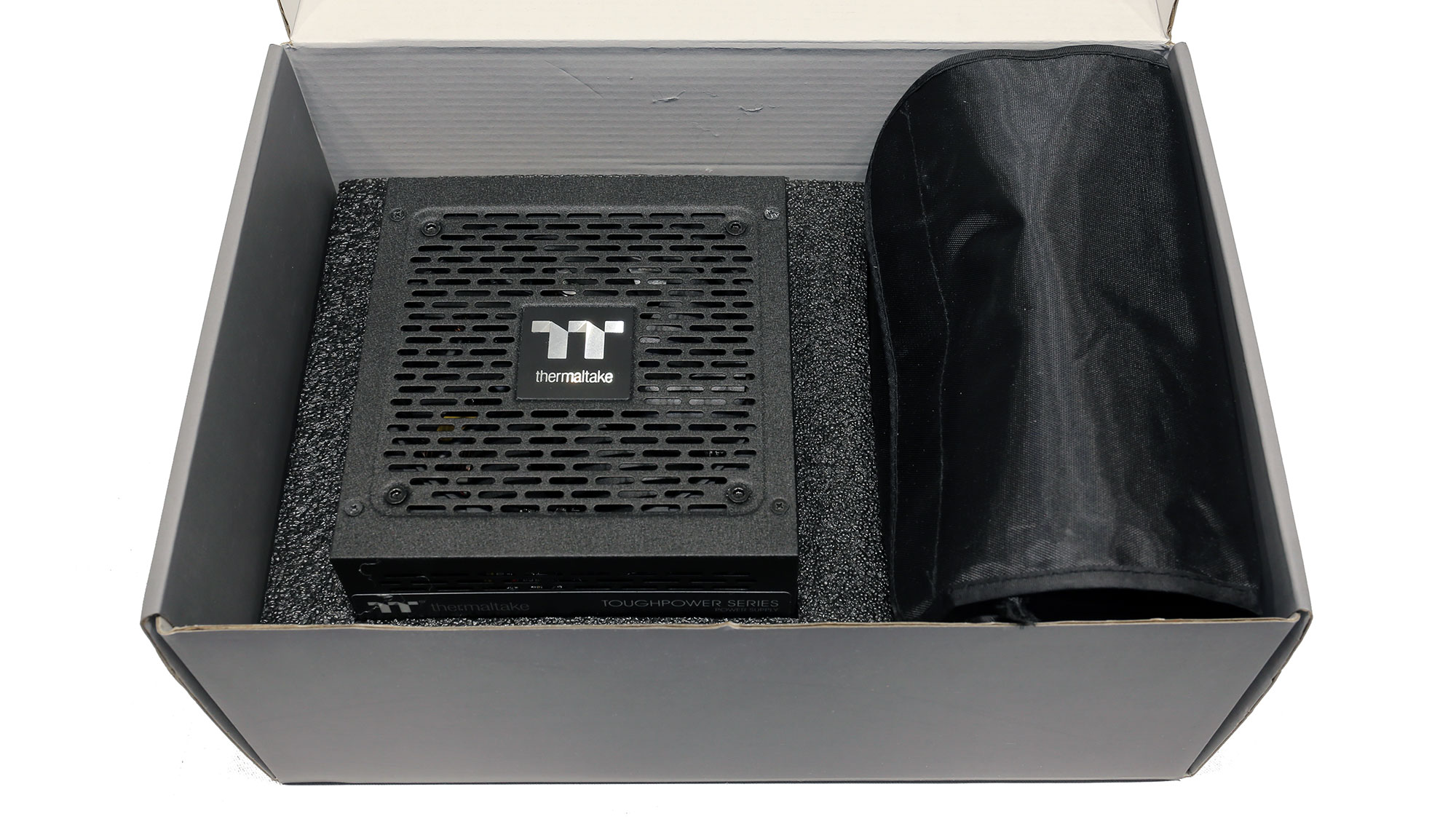
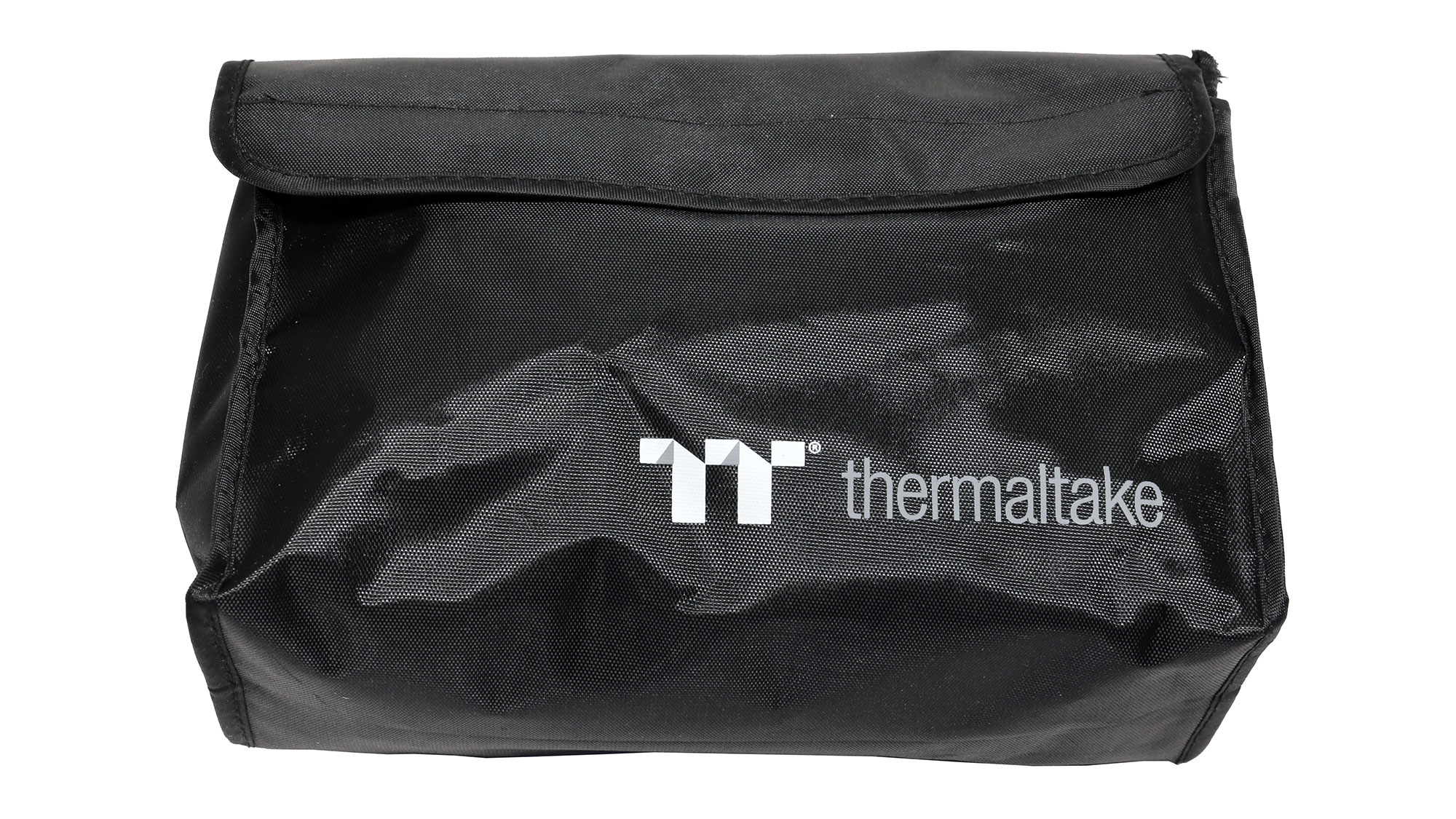
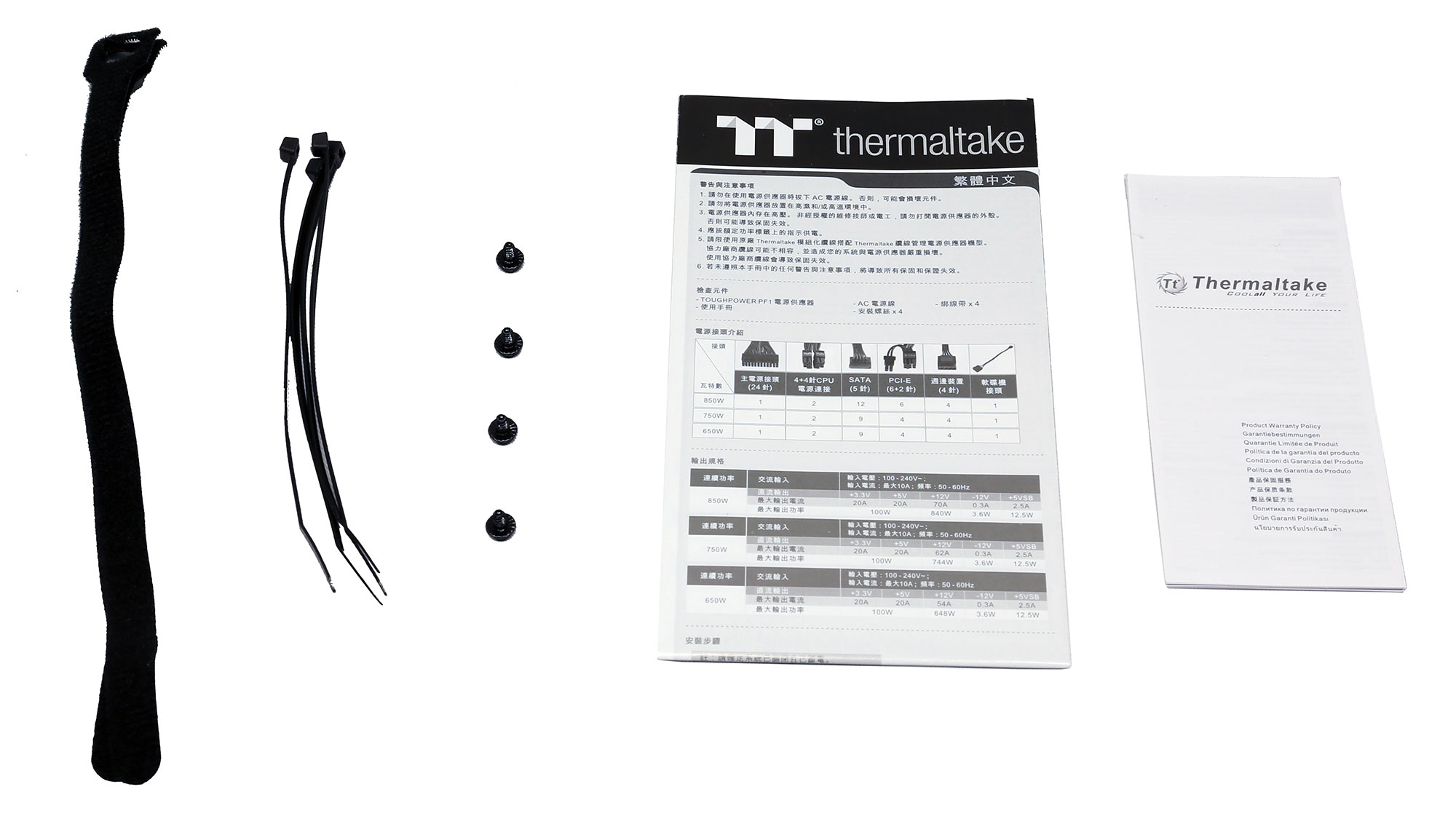
Thermaltake Toughpower PF1 850W Specifications
| Manufacturer (OEM) | HKC |
| Max. DC Output | 850W |
| Efficiency | 80 PLUS Platinum, ETA-A (88-91%) |
| Noise | LAMBDA-A- (25-30 dB[A]) |
| Modular | ✓ (Fully) |
| Intel C6/C7 Power State Support | ✓ |
| Operating Temperature (Continuous Full Load) | 0 - 50°C |
| Over Voltage Protection | ✓ |
| Under Voltage Protection | ✓ |
| Over Power Protection | ✓ |
| Over Current (+12V) Protection | ✓ |
| Over Temperature Protection | ✓ |
| Short Circuit Protection | ✓ |
| Surge Protection | ✓ |
| Inrush Current Protection | ✓ |
| Fan Failure Protection | ✗ |
| No Load Operation | ✓ |
| Cooling | 120mm Hydraulic Bearing Fan [TT-1225 (XW12025MS)] |
| Semi-Passive Operation | ✓ (selectable) |
| Dimensions (W x H x D) | 150 x 85 x 140mm |
| Weight | 1.25 kg (2.76 lb) |
| Form Factor | ATX12V v2.4, EPS 2.92 |
| Warranty | 10 Years |
Power Specifications
| Rail | 3.3V | 5V | 12V | 5VSB | -12V | |
| Max. Power | Amps | 20 | 20 | 70 | 2.5 | 0.3 |
| Watts | 100 | 840 | 12.5 | 3.6 | ||
| Total Max. Power (W) | 850 |
Cables & Connectors
| Modular Cables | Cable Count | Connector Count (Total) | Gauge | In Cable Capacitors |
|---|---|---|---|---|
| ATX connector 20+4 pin (600mm) | 1 | 1 | 16-18AWG | No |
| 4+4 pin EPS12V (650mm) | 2 | 2 | 16AWG | No |
| 6+2 pin PCIe (500mm+150mm) | 3 | 6 | 16-18AWG | No |
| SATA (520mm+150mm+150mm+150mm) | 3 | 12 | 18AWG | No |
| 4-pin Molex (490mm+150mm+150mm+150mm) | 1 | 4 | 18AWG | No |
| FDD Adapter (+100mm) | 1 | 1 | 22AWG | No |
| AC Power Cord (1400mm) - C13 coupler | 1 | 1 | 18AWG | - |
There are plenty of cables and connectors, including two EPS, six PCIe, twelve SATA and four 4-pin Molex. There is even an FDD adapter provided for those of you that might need one. Cable length is satisfactory, and it is nice to see an adequate distance between the peripheral connectors. Lastly, there are no in-cable caps, which make cable routing a tough task.
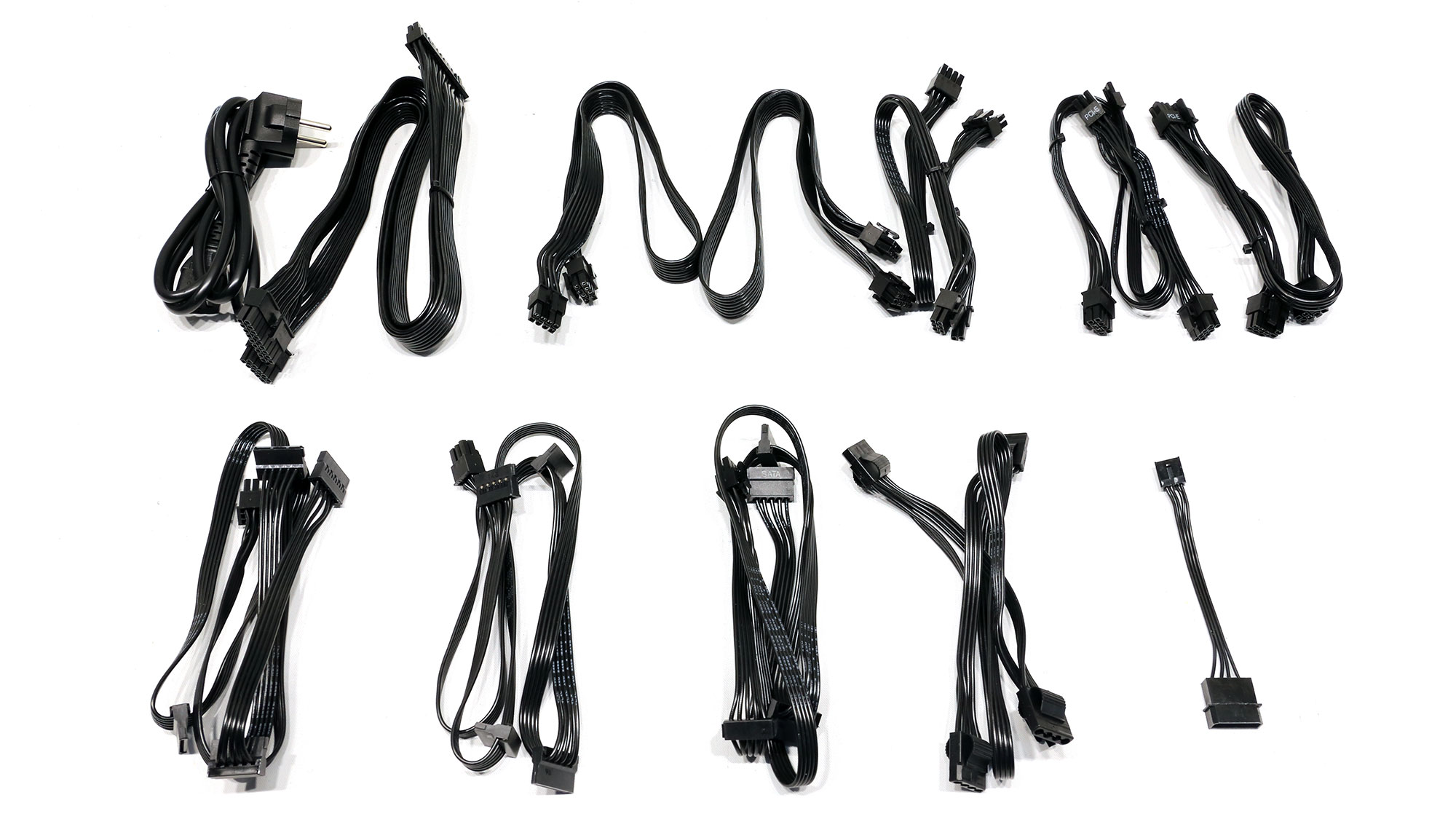
Cable Photos

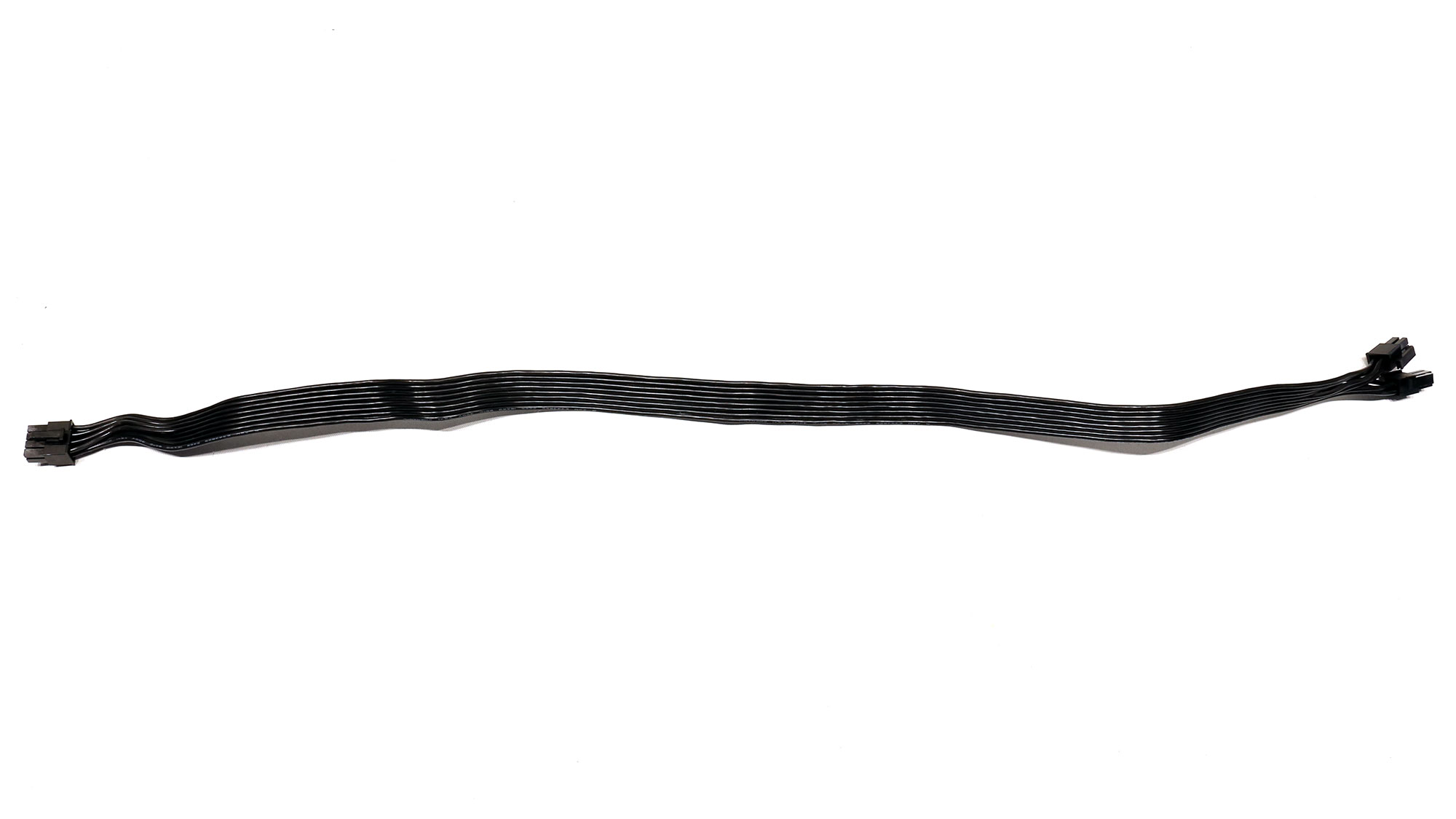

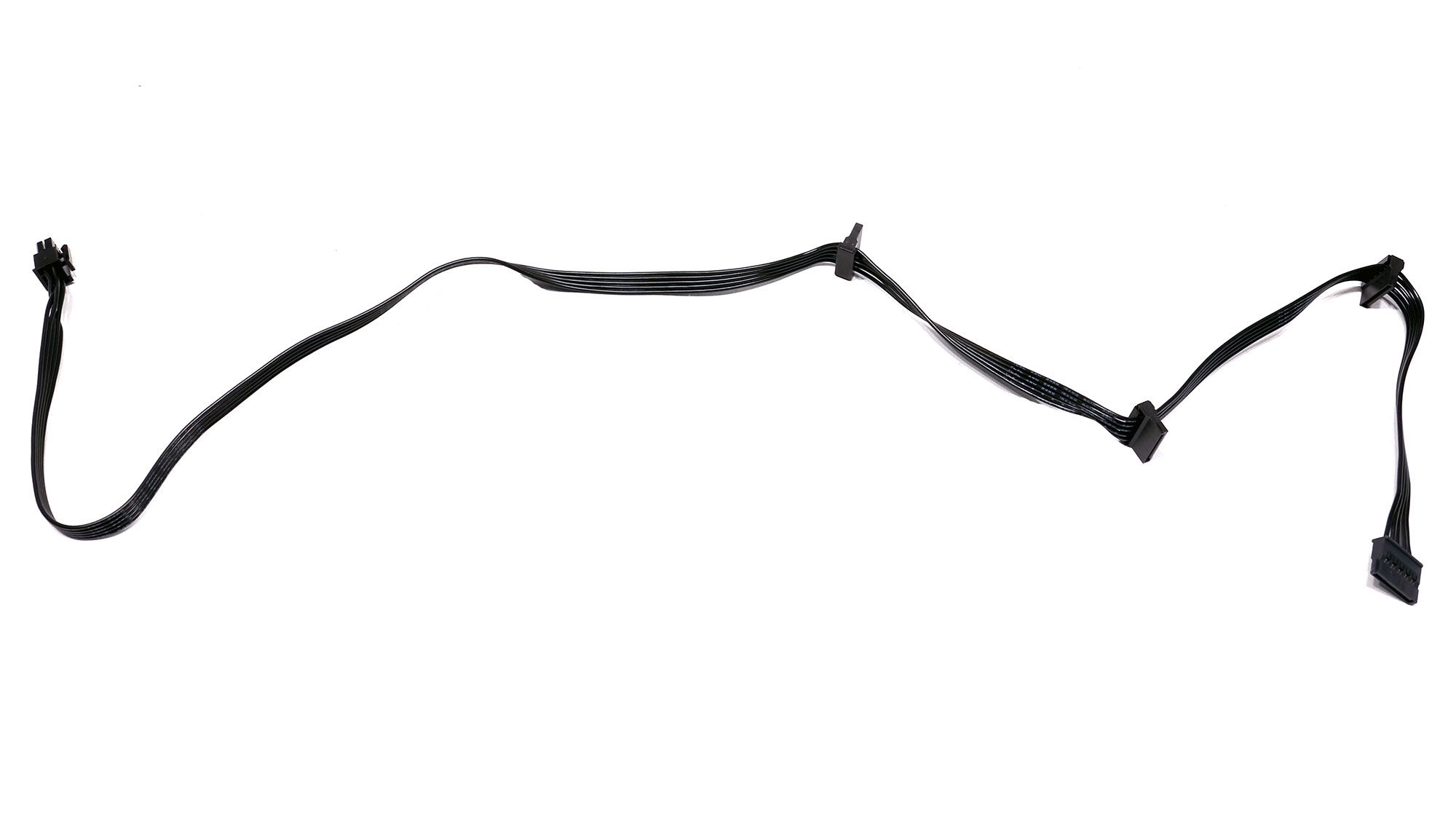

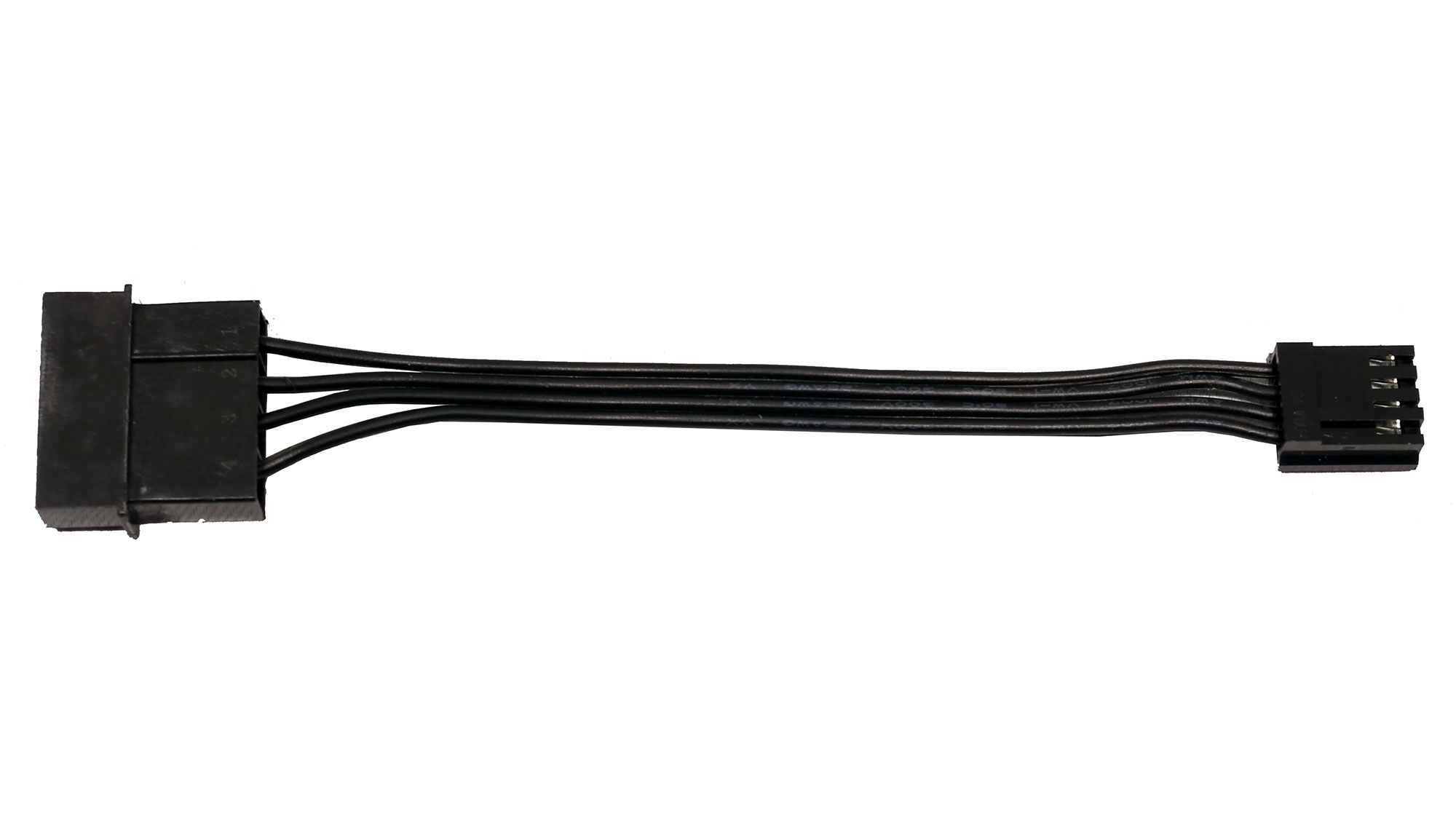
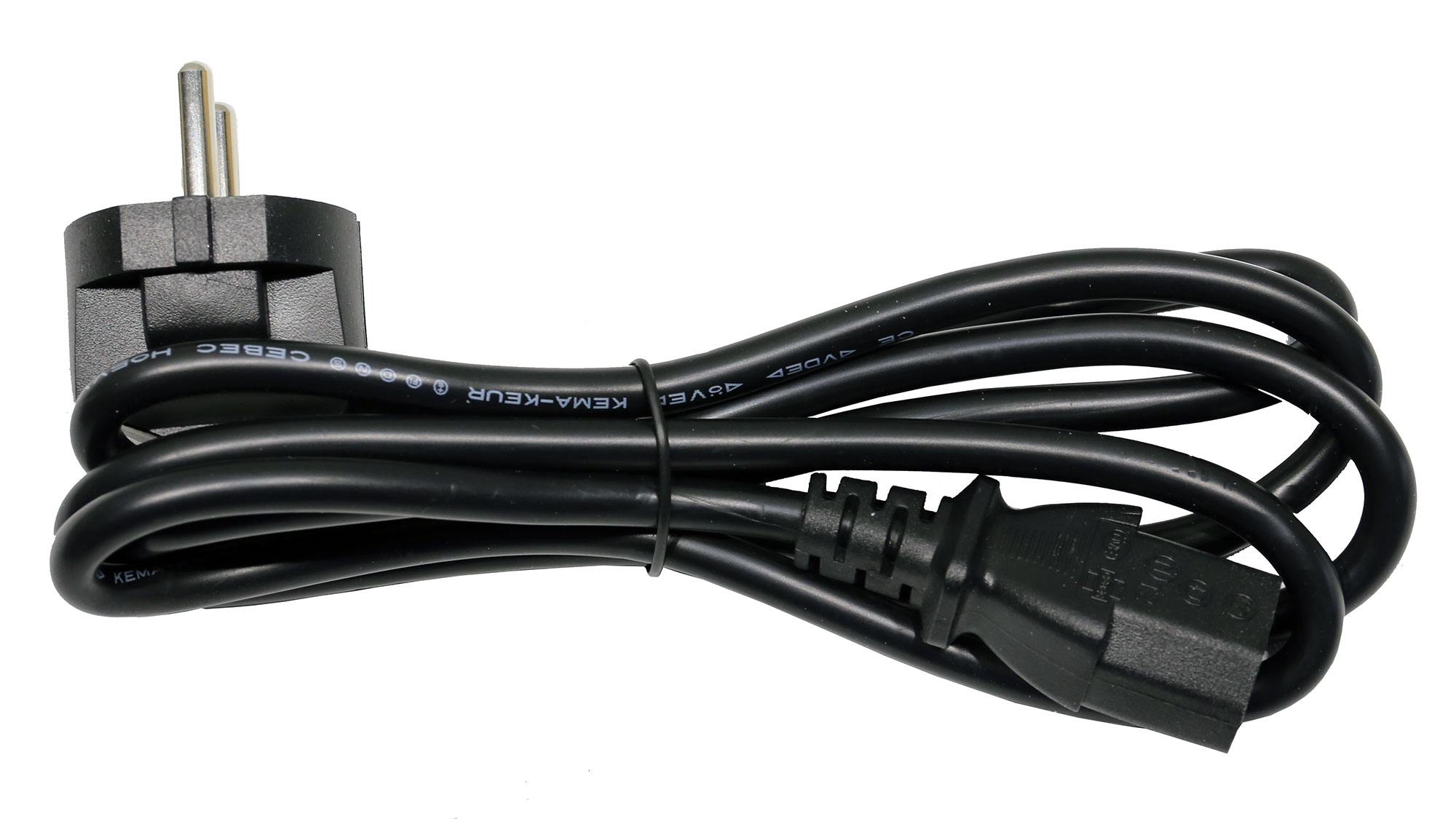
Component Analysis
We strongly encourage you to have a look at our PSUs 101 article, which provides valuable information about PSUs and their operation, allowing you to better understand the components we're about to discuss.
| General Information | - |
| Manufacturer (OEM) | HKC |
| PCB Type | Double Sided |
| Primary Side | - |
| Transient Filter | 6x Y caps, 2x X caps, 2x CM chokes |
| Inrush Protection | NTC Thermistor 2.5D-15 (2.5Ohm) & Relay |
| Bridge Rectifier(s) | 2x GBU1506L (600V, 15A @ 100°C) |
| APFC MOSFETs | 2x Lonten LSB65R070GF (650V, 30A @ 100°C, Rds(on): 0.07Ohm) |
| APFC Boost Diode | 1x Global Power Technology G3S06510H (650V, 10A @ 120°C) |
| Bulk Cap(s) | 2x Rubycon (420V, 390uF each or 780uF combined, 2,000h @ 105°C, MXH) |
| Main Switchers | 2x NCE Power NCE65TF130F (650V, 18A @ 100°C, Rds(on): 0.13Ohm) |
| APFC Controller | Champion CM6500UNX |
| Resonant Controller | Champion CM6901X |
| Topology | Primary side: APFC, Half-Bridge & LLC converter Secondary side: Synchronous Rectification & DC-DC converters |
| Secondary Side | - |
| +12V MOSFETs | 6x Advanced Power AP4N1R8CMT-A (45V, 32A @ 70°C, Rds(on): 1.8mOhm) |
| 5V & 3.3V | DC-DC Converters: 4x Advanced Power AP4024GEMT (30V, 20.9A @ 70°C, Rds(on): 4.5mOhm) PWM Controllers: 2x ANPEC APW7164 |
| Filtering Capacitors | Electrolytic: 1x Nippon Chemi-Con (4-10,000h @ 105°C, KY), 2x Nippon Chemi-Con (4-10,000h @ 105°C, KYA), 5x Nippon Chemi-Con (1-5,000h @ 105°C, KZE), 1x Nippon Chemi-Con (6-10,000h @ 105°C, KZM) Polymer: 21x NIC |
| Supervisor IC | Sitronix ST9S313-DAG (OVP, UVP, SCP) |
| Fan Model | Thermaltake TT-1225 (XW12025MS) (120mm, 12V, 0.30A, Hydraulic Bearing Fan) |
| 5VSB Circuit | - |
| Rectifier | 1x SB1045L SBR (45V, 10A) |
| Standby PWM Controller | Excelliance MOS Corporation EM8564A |
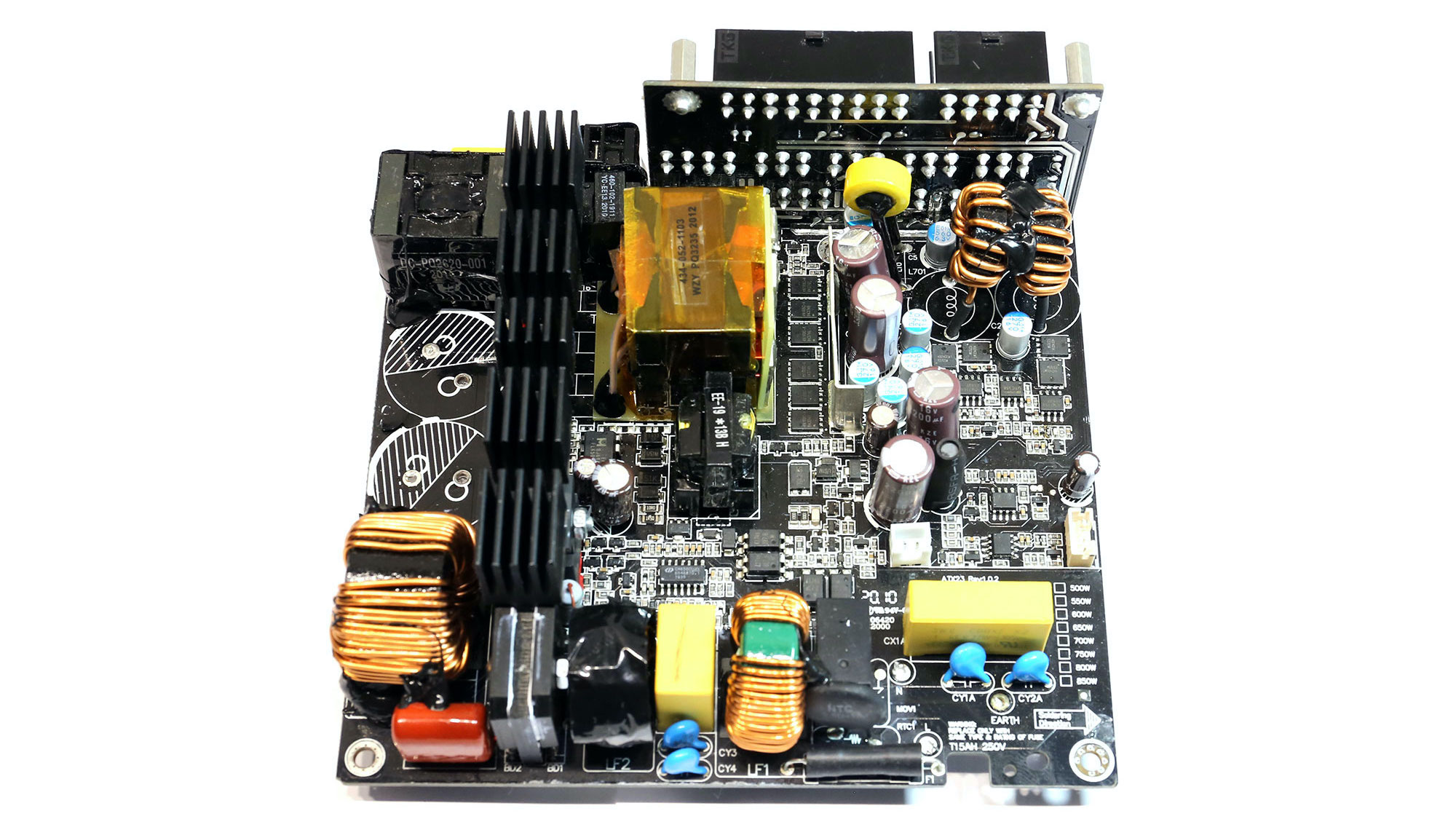
Overall Photos
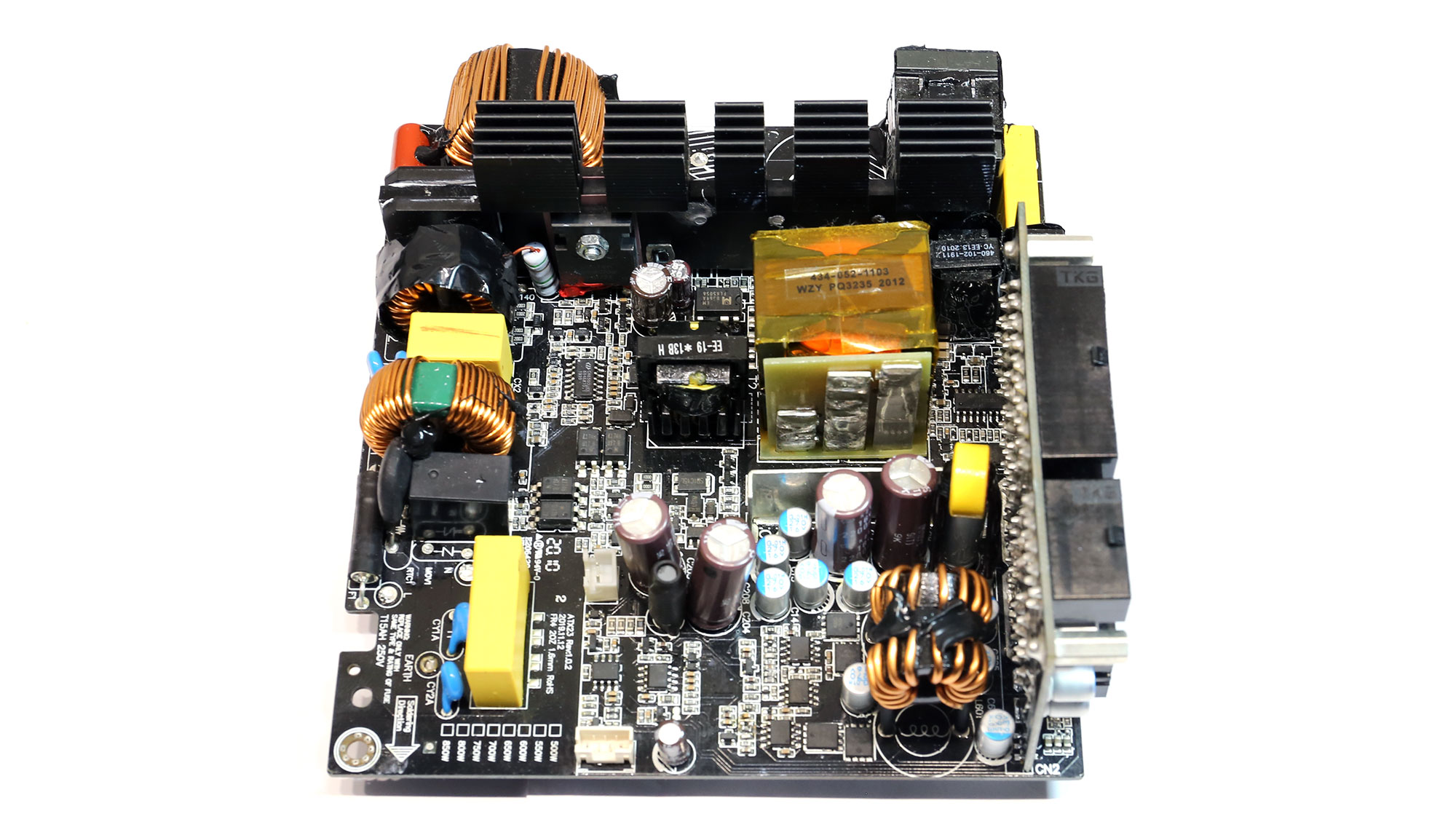
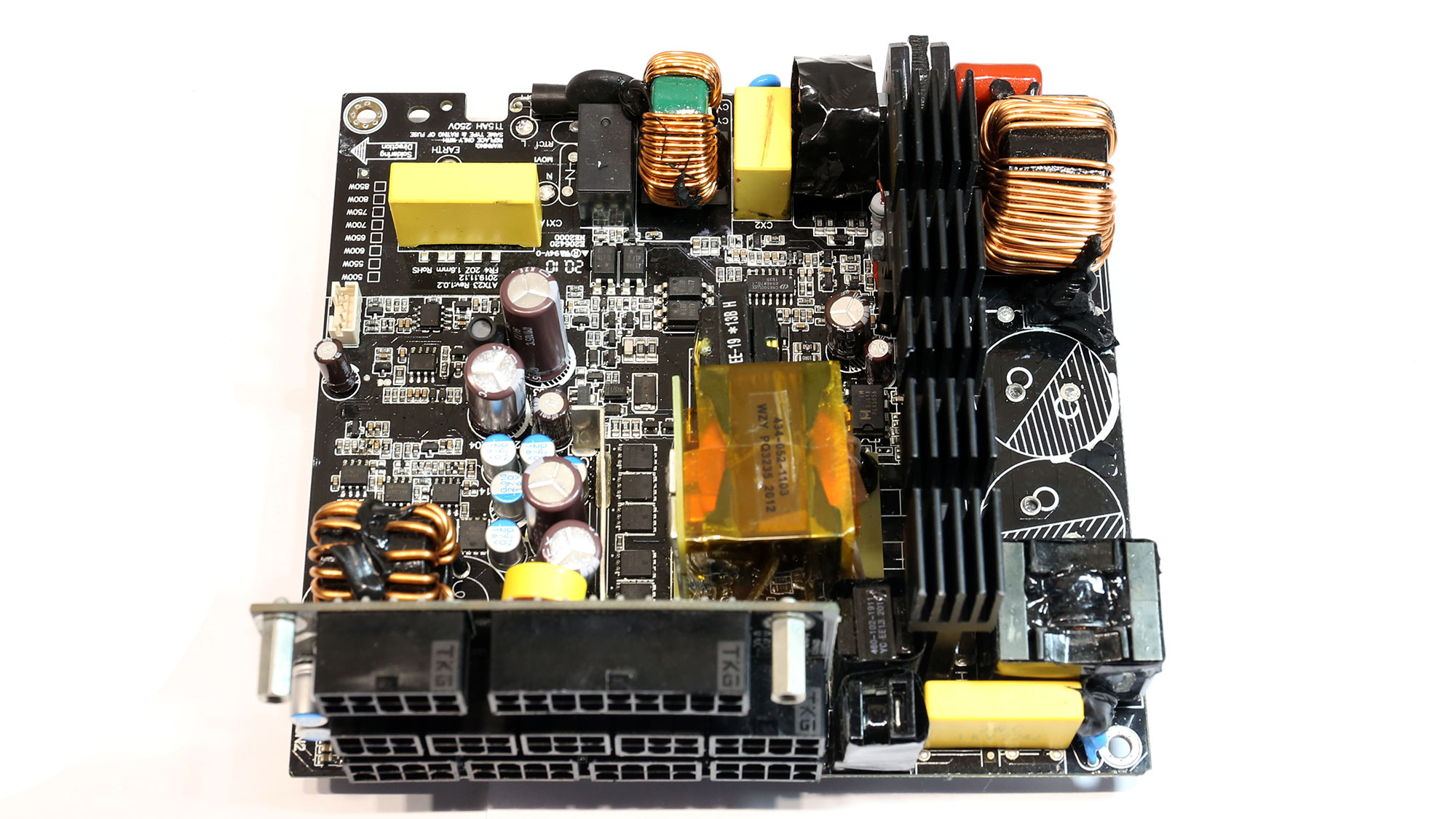
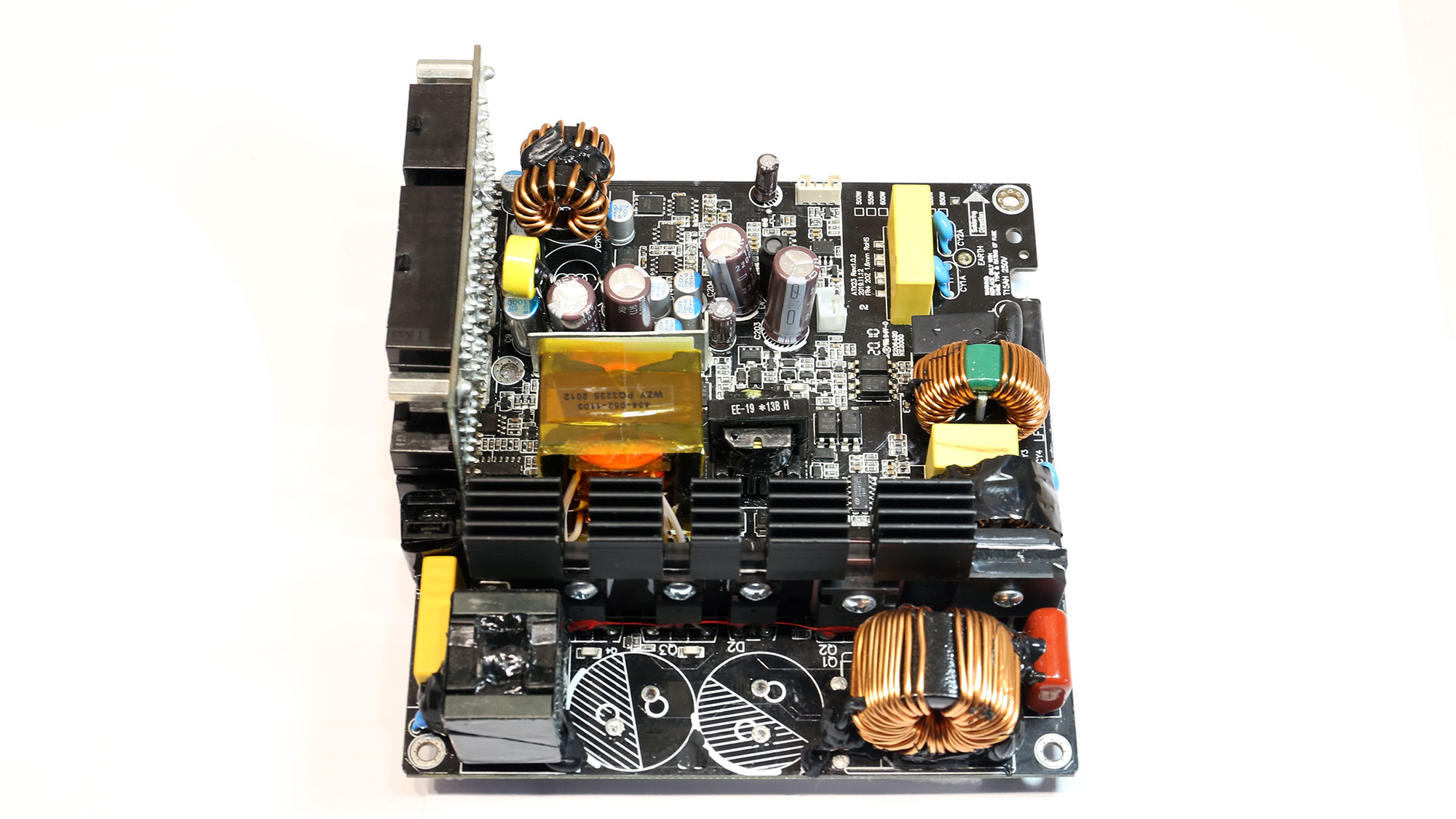
This a platform by HKC, a manufacturer that we have never encountered before in the high-end category. The design is clean, allowing for increased airflow, and the lack of proper heat sinks on the secondary side makes a huge impression. On the contrary, the heat sink on the primary side is quite large, always for this efficiency category's standards. HKC used good electrolytic caps and an HDB fan. The FETs look to be of good quality, too.
Get Tom's Hardware's best news and in-depth reviews, straight to your inbox.
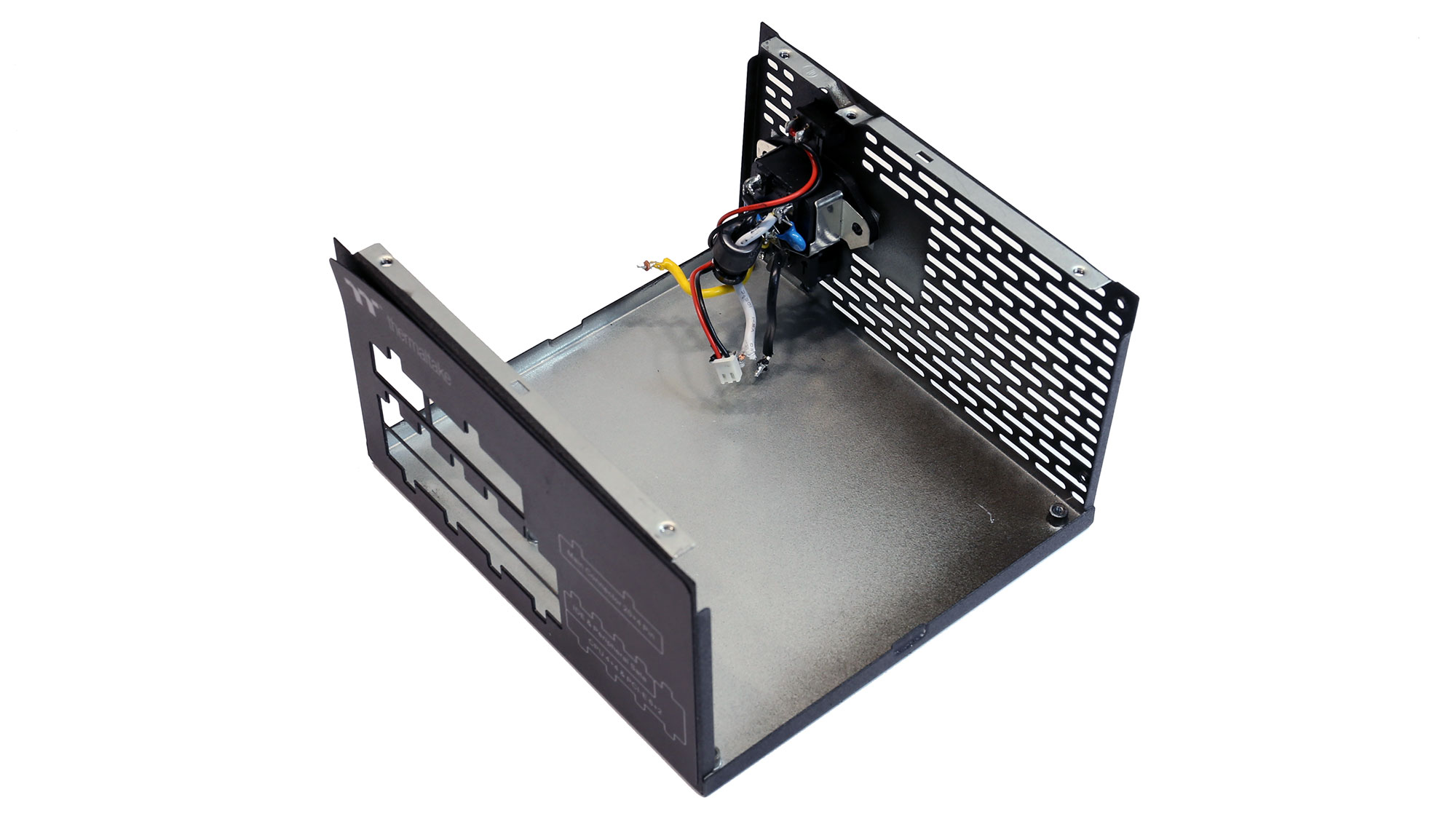
Transient filter
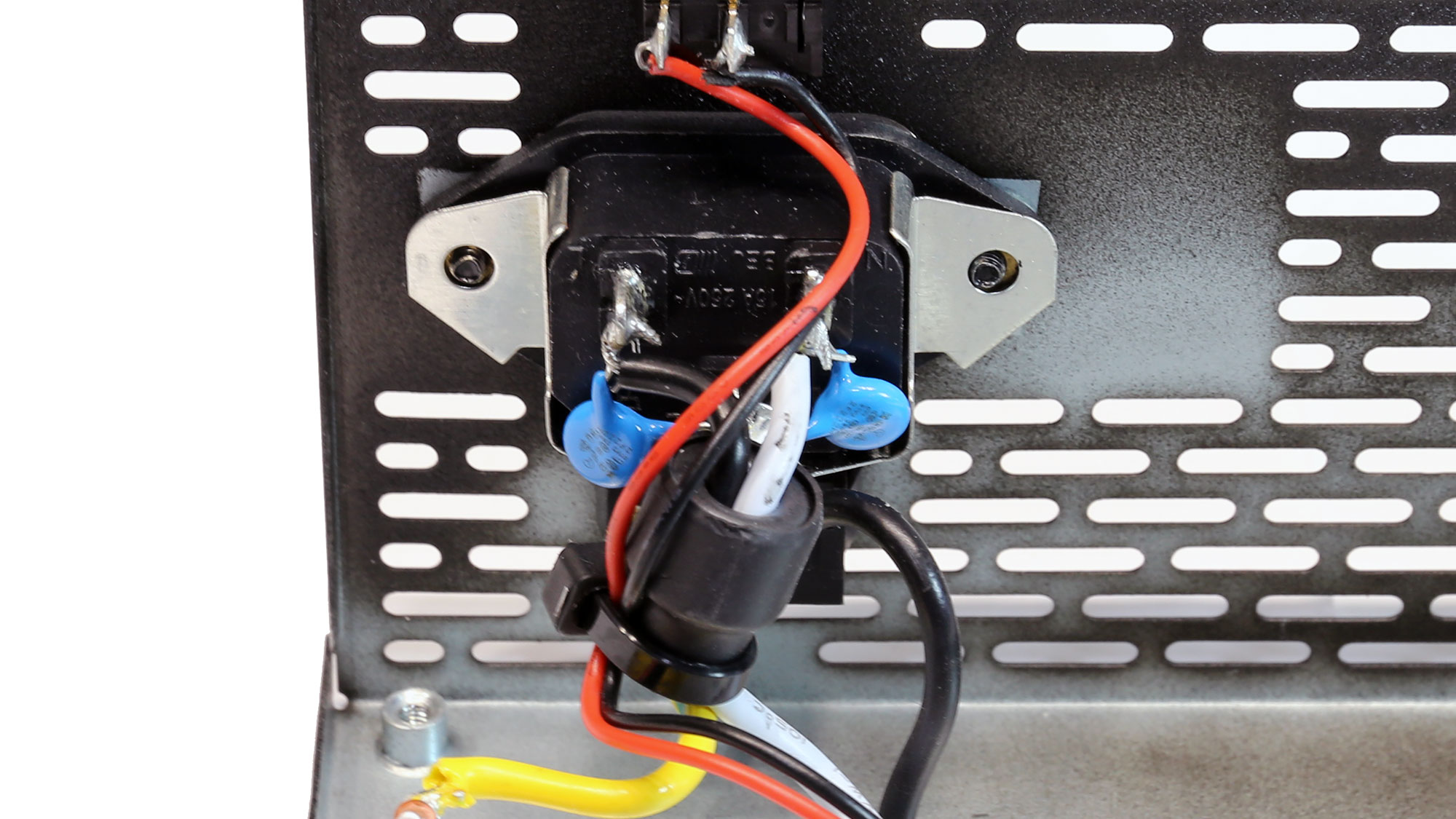

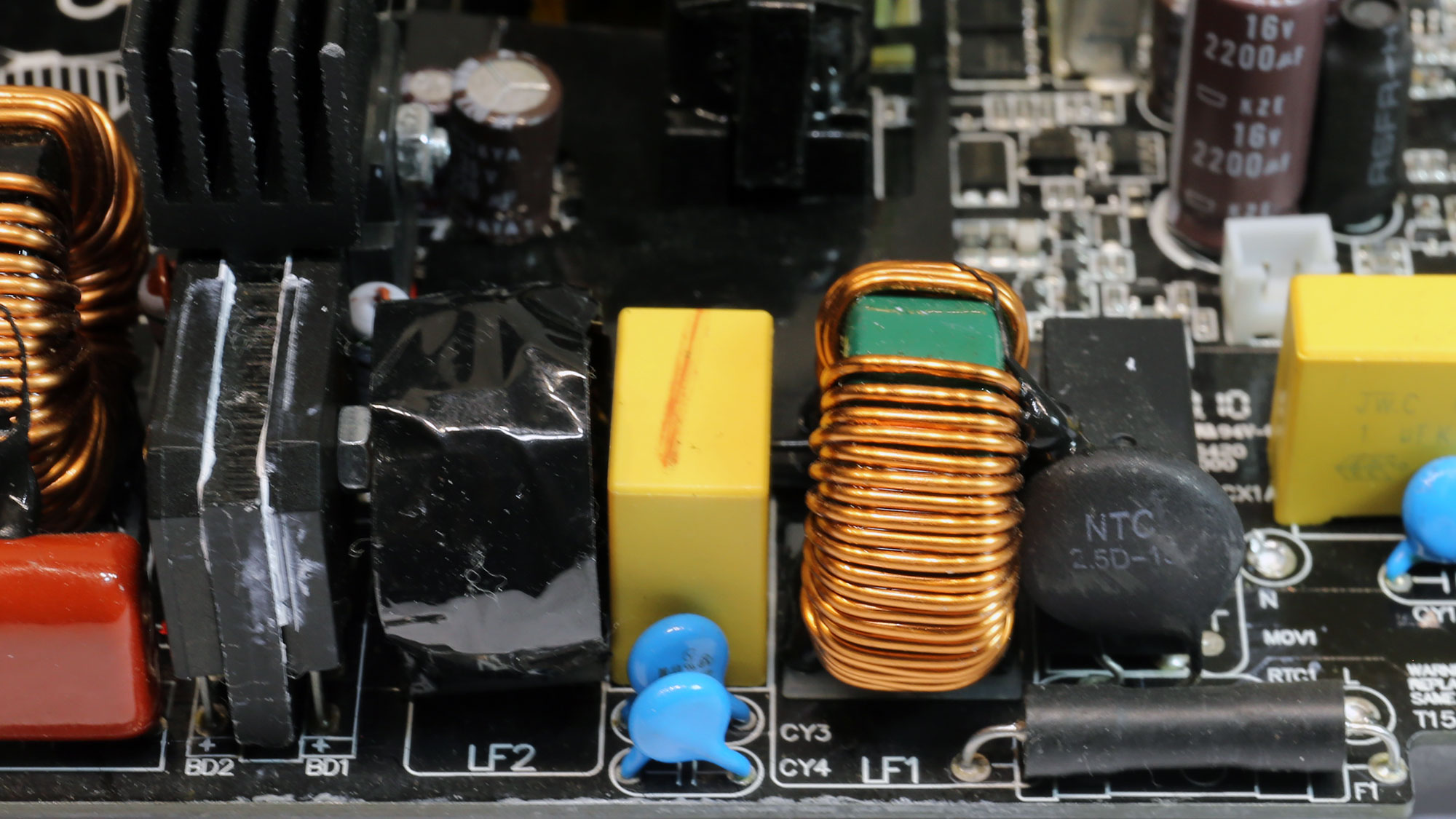
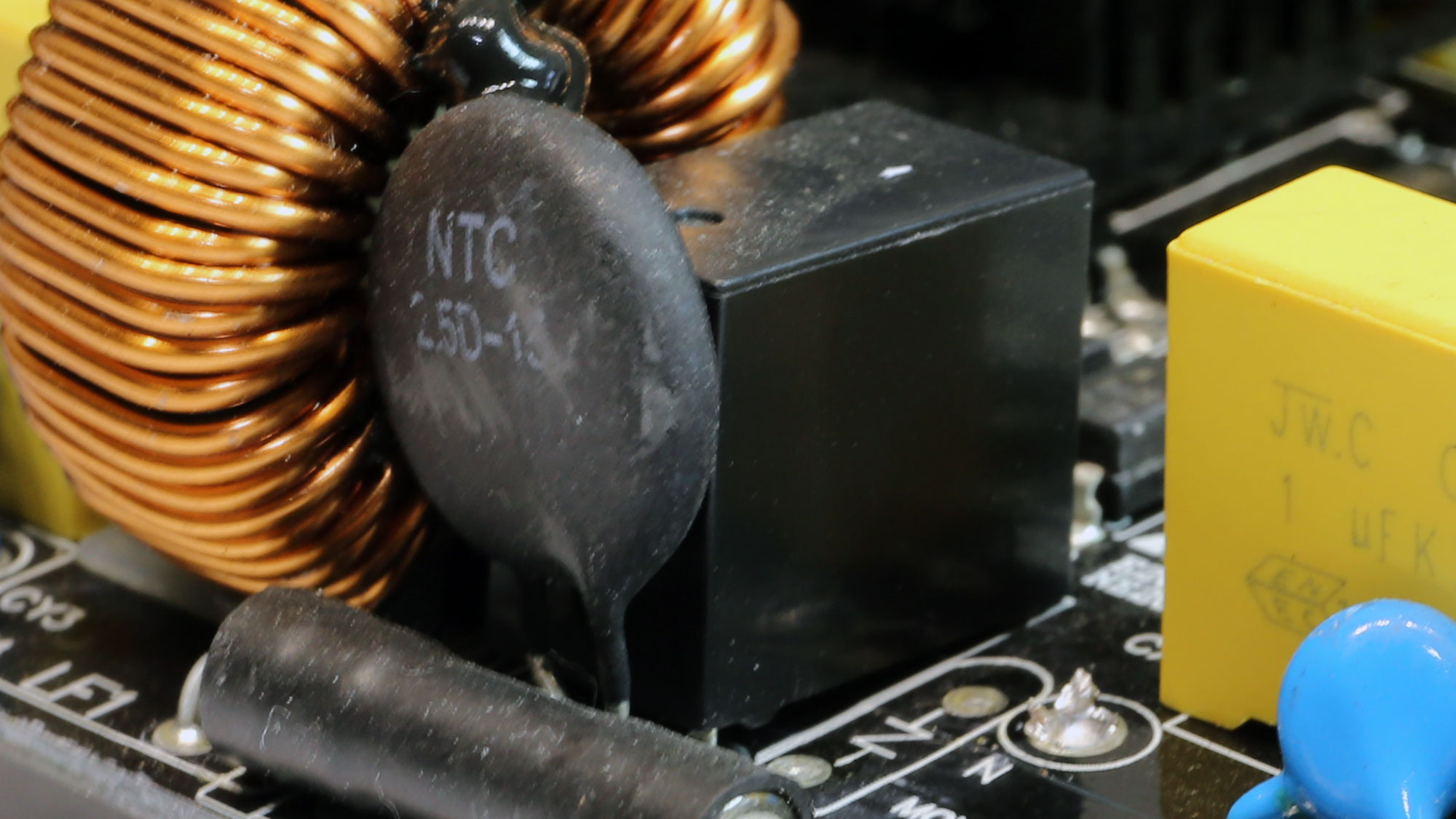
The transient filter does a decent job of suppressing EMI emissions. The only problem is that it doesn't include an MOV, which protects against voltage surges. Finally, there is an NTC thermistor-relay combo for lowering the inrush currents.
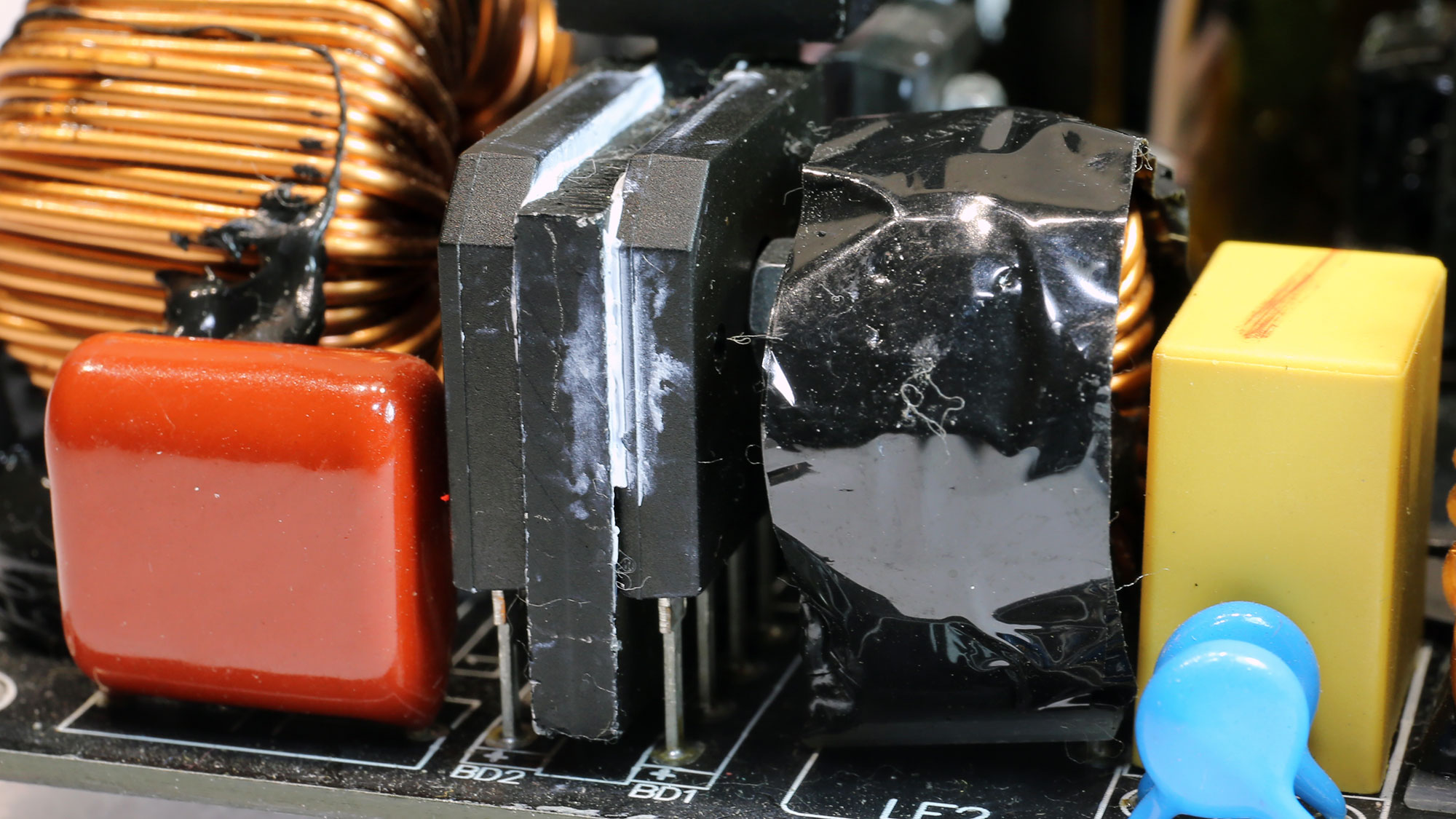
Bridge rectifiers
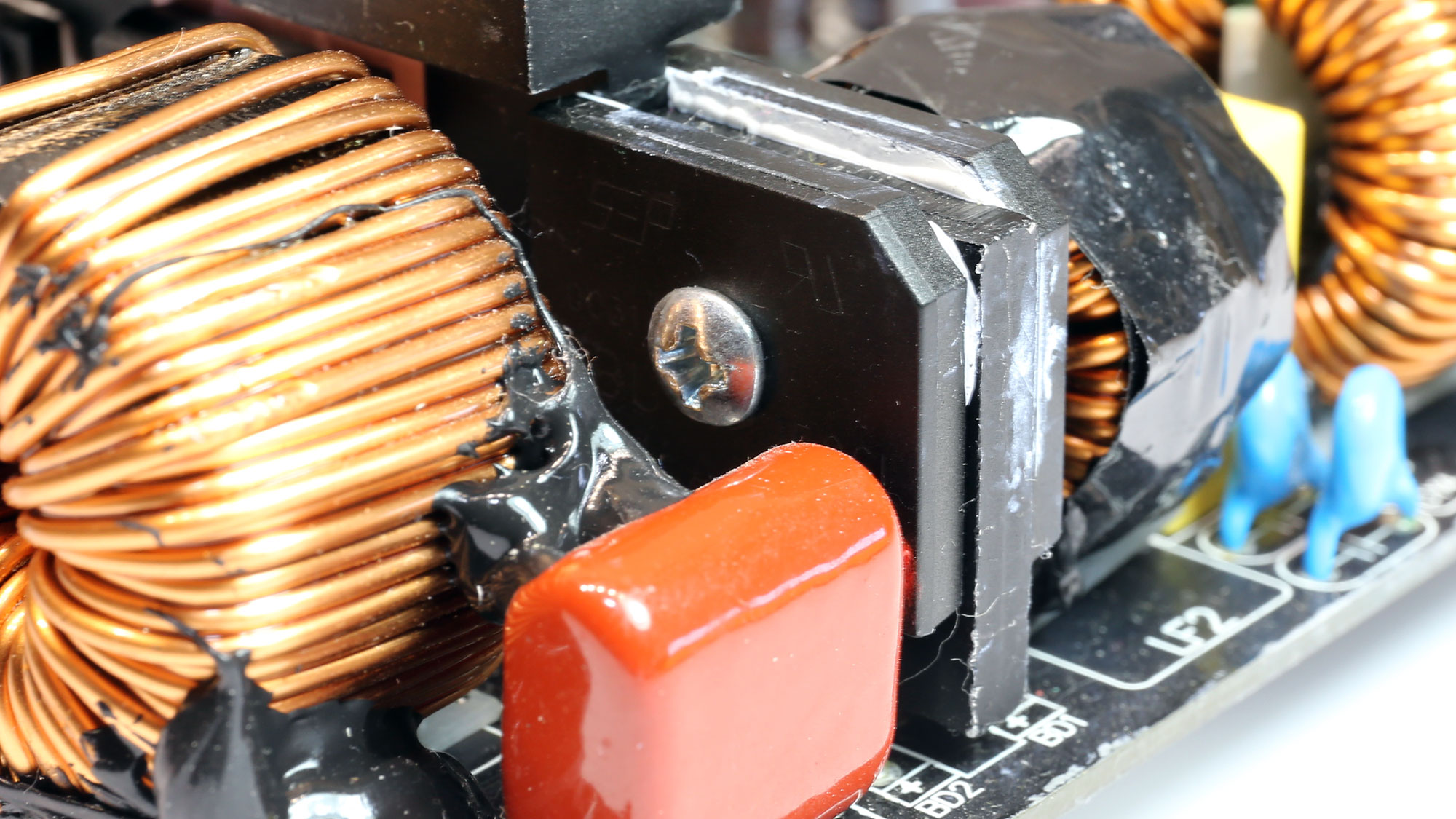
The pair of bridge rectifiers can handle up to 30A of current, so it easily meets this unit's demands.
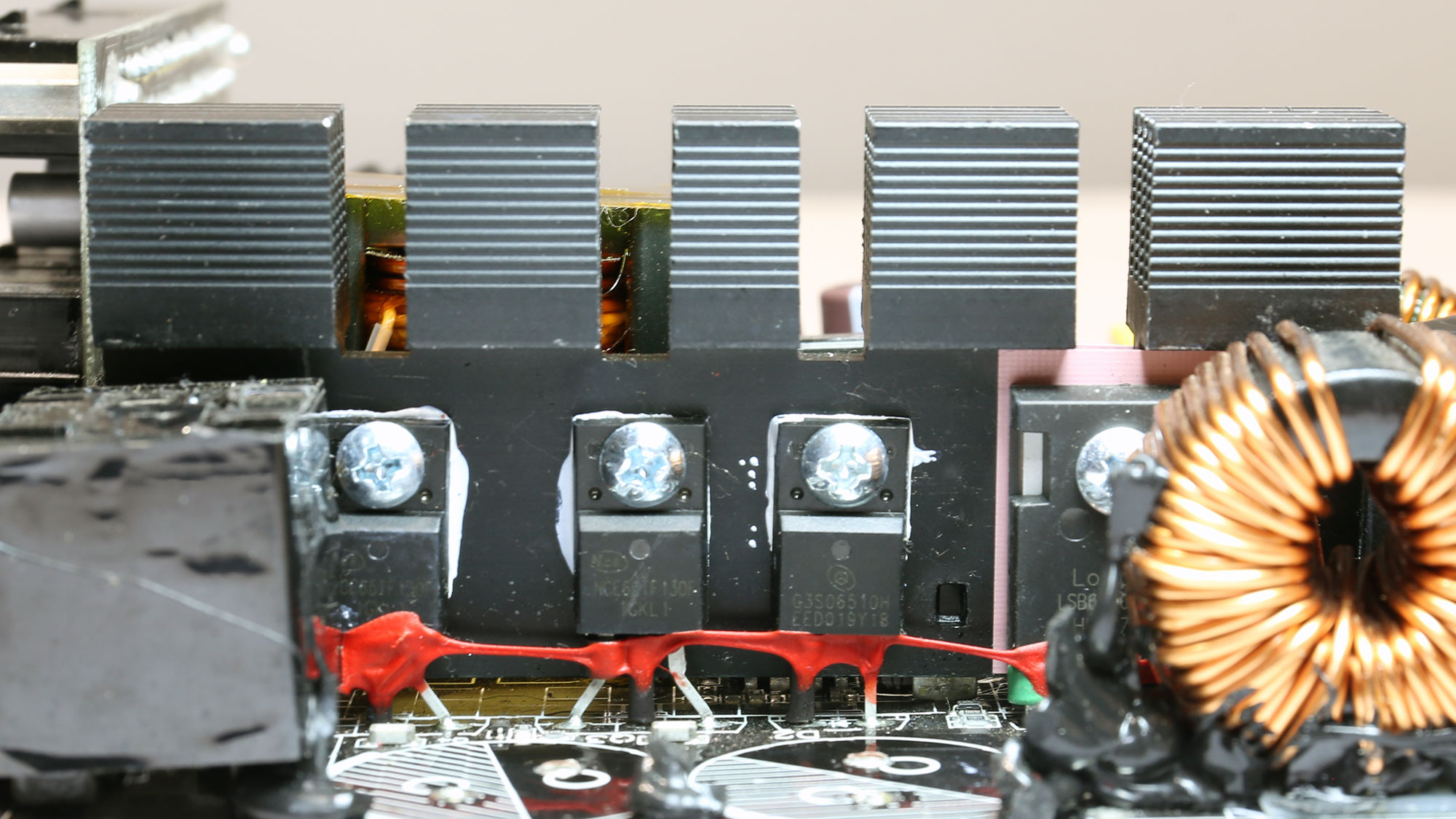
APFC converter
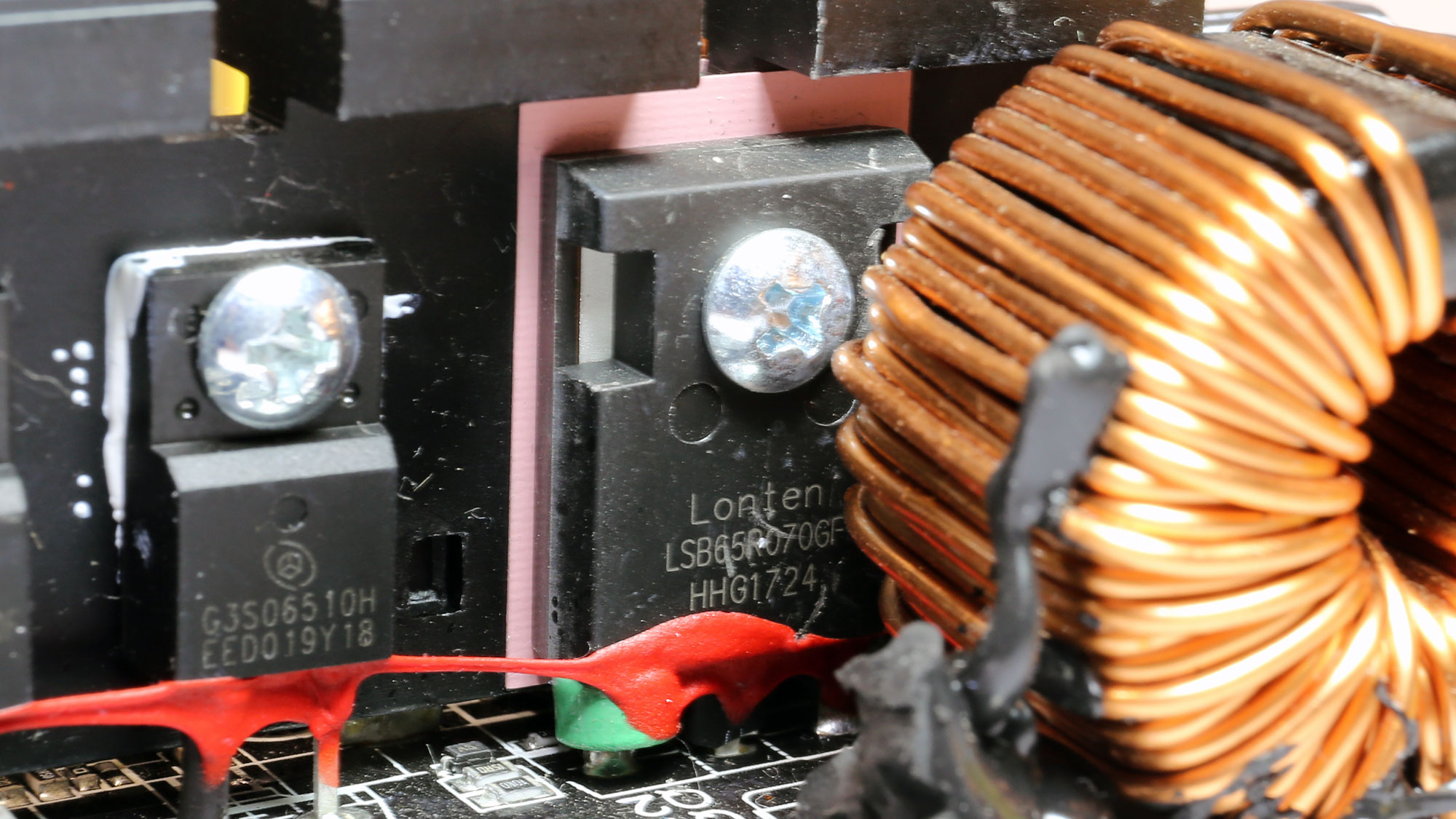
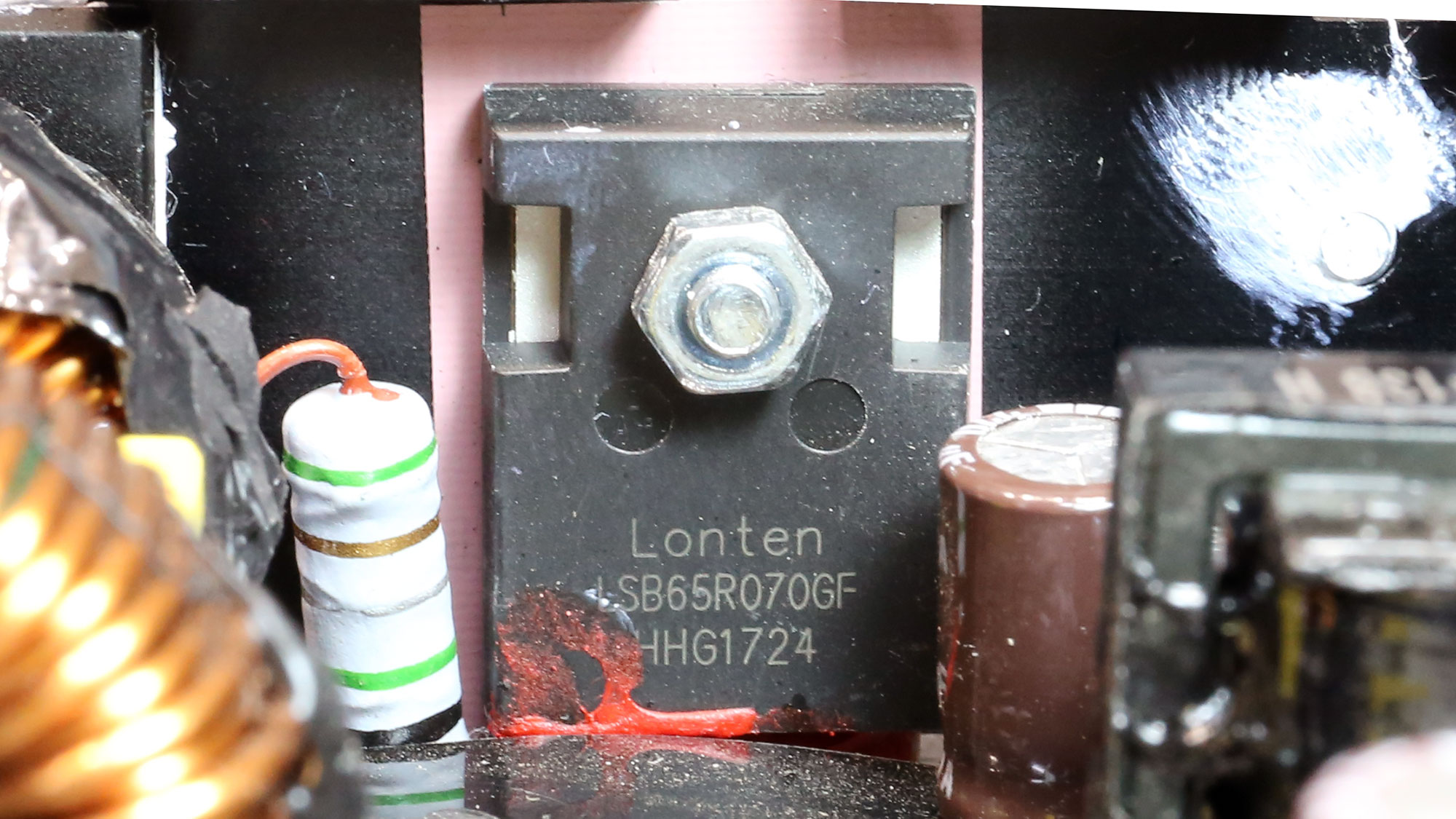
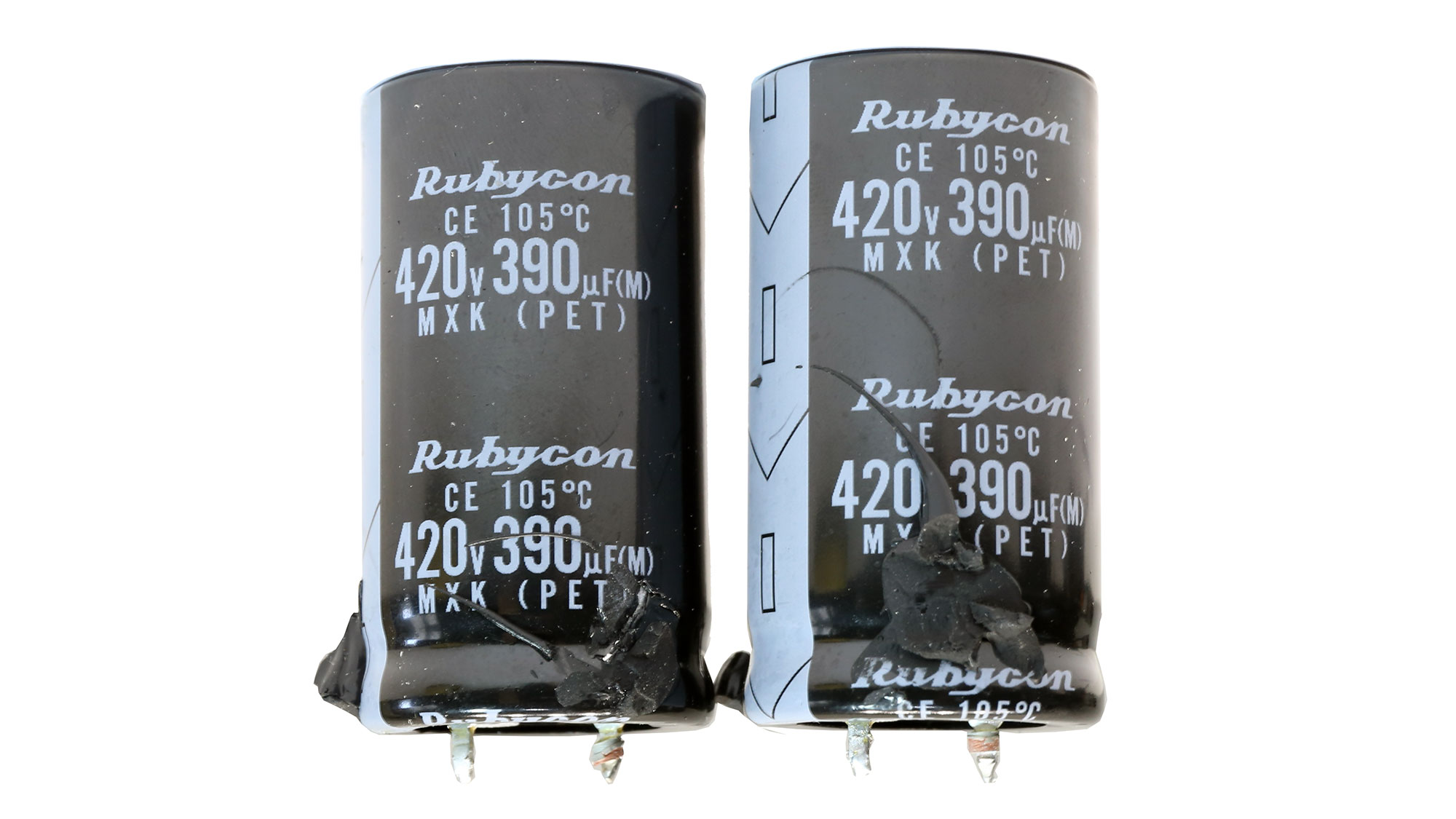

The APFC converter uses two Lonten FETs. We have never heard of this brand before, but these FETs look good. They have low RDS (on), minimizing energy losses. Rubycon provides the bulk caps, so there is no doubt about their quality. Finally, the APFC controller is a Champion CM6500UNX IC.

Main FETs and primary transformer
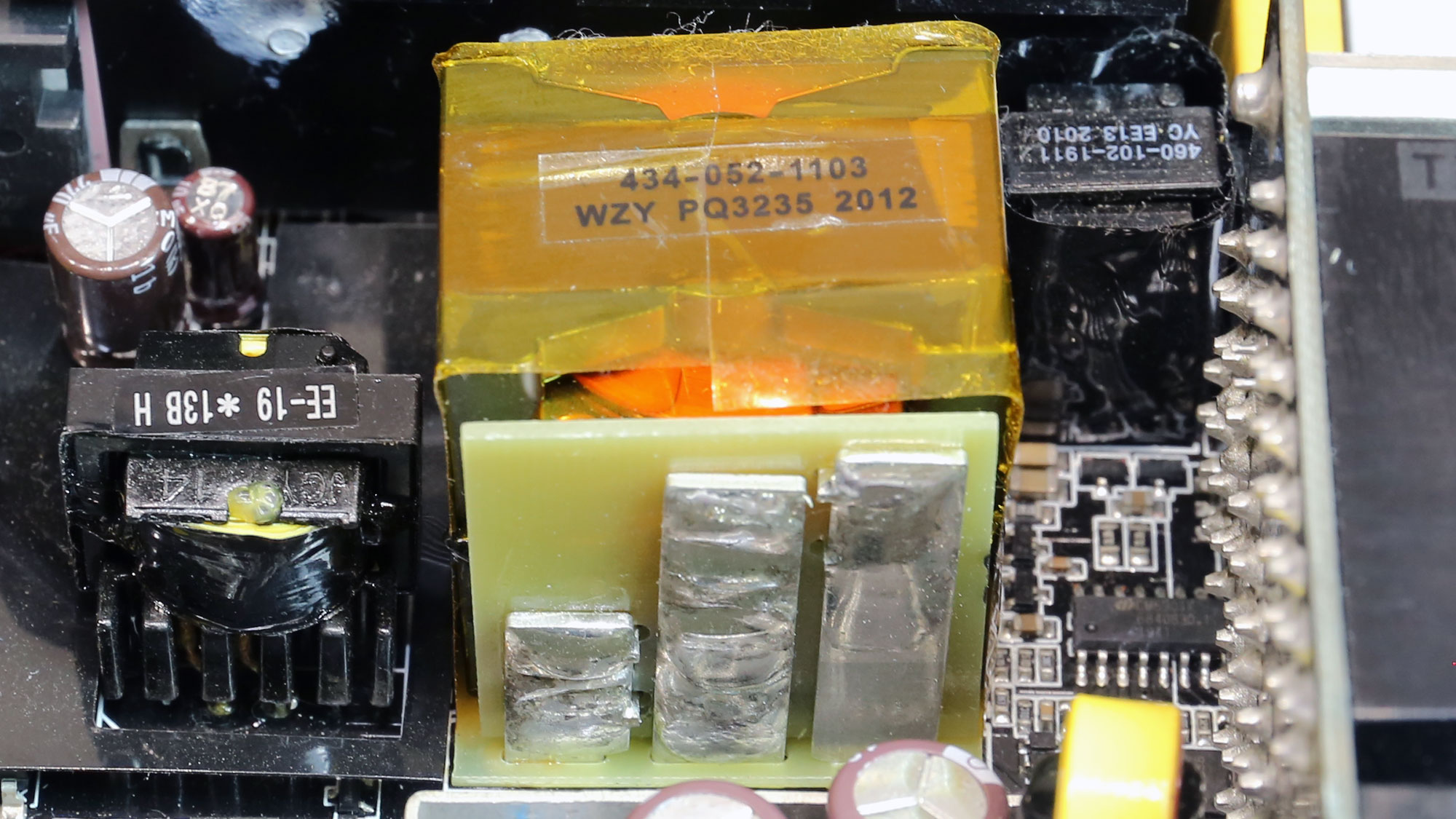
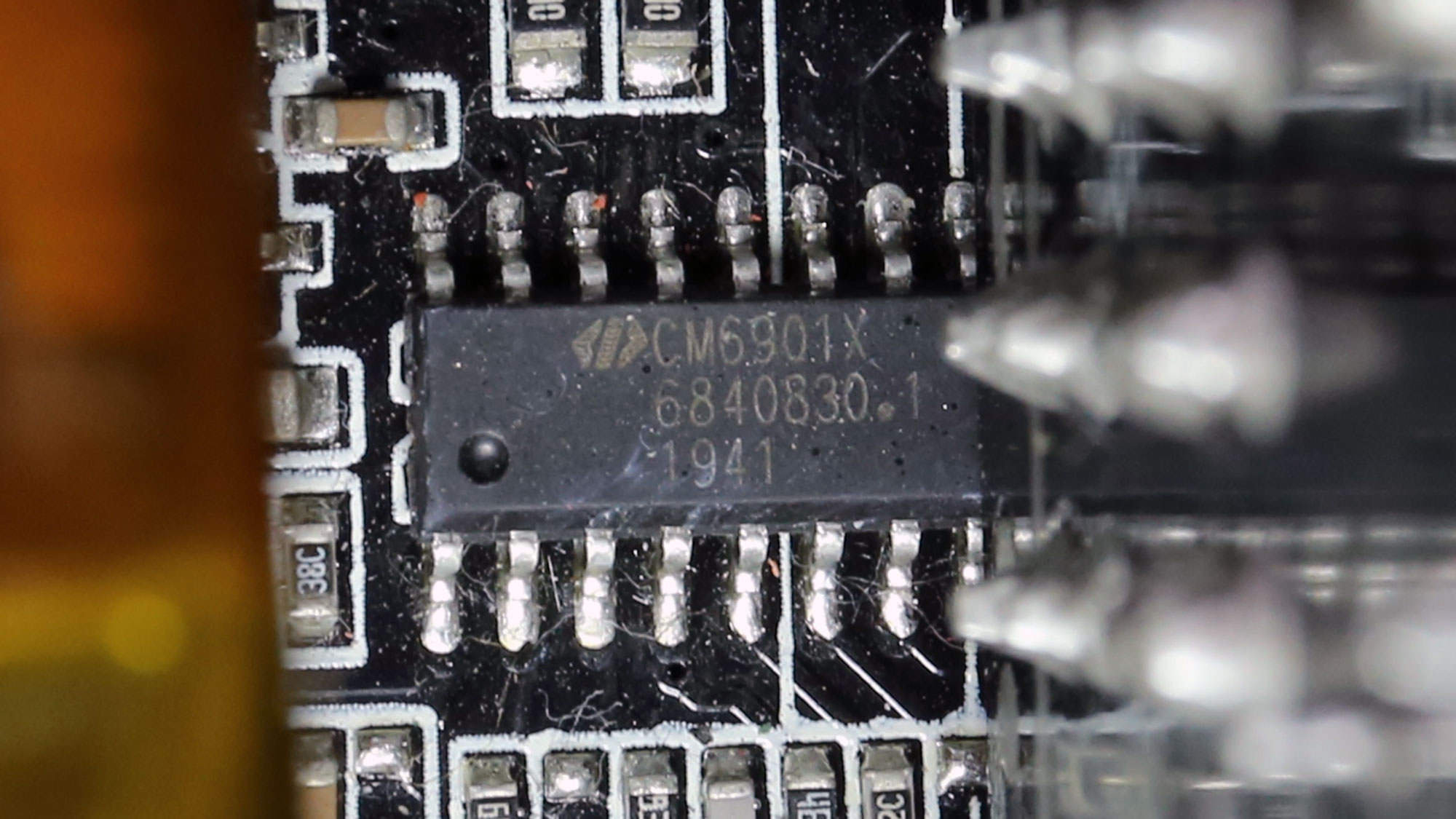

The primary switching FETs are by NCE Power and are arranged into a half-bridge topology. The LLC resonant controller is a Champion CM6901X IC, which is widely used in high-efficiency platforms. Besides the resonant converter, it also controls the 12V FETs.
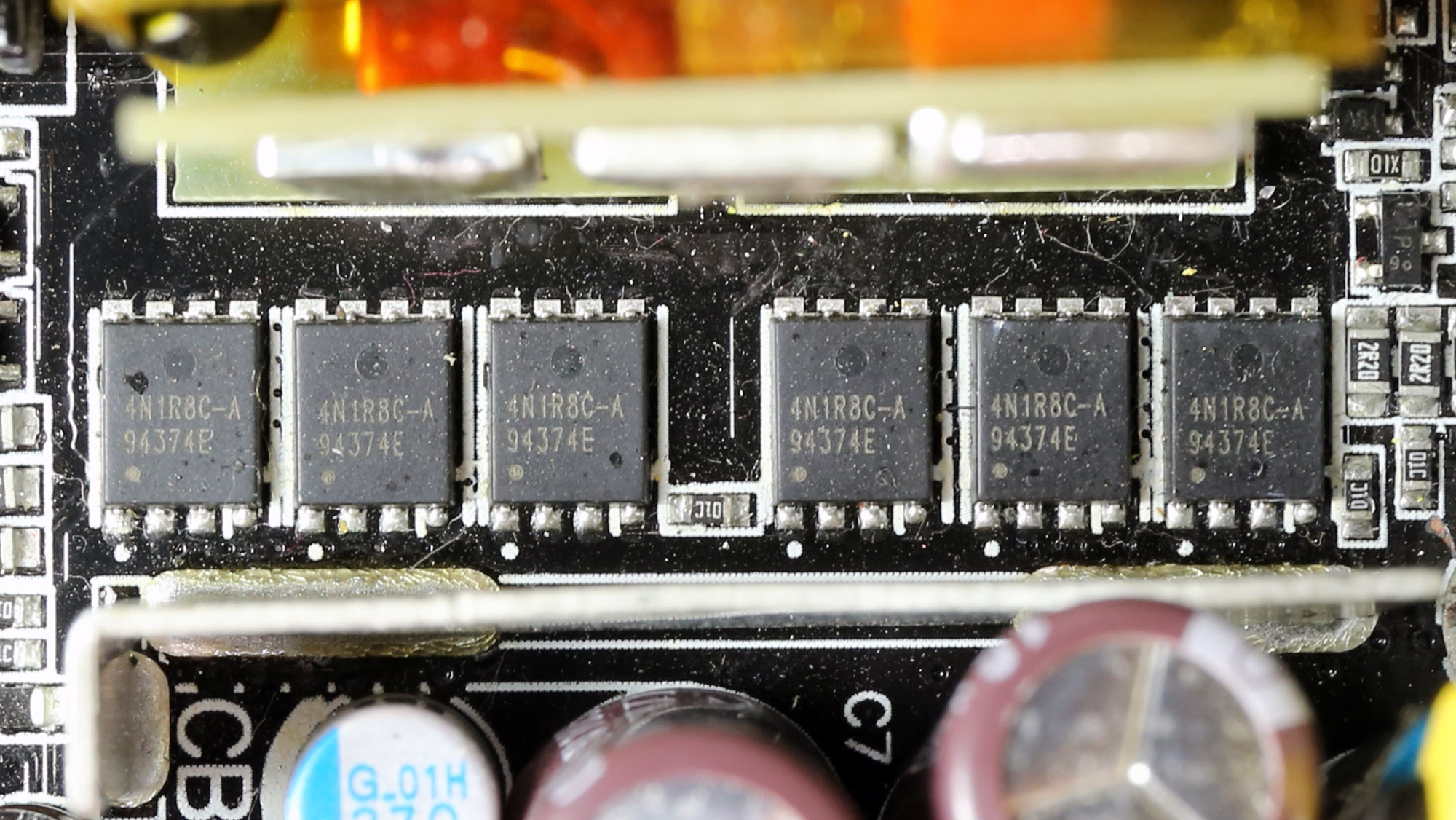
12V FETs and VRMs

The 12V FETs are soldered on the top side of the PCB. Usually, these FETs are on the PCB's solder side, and some manufacturers also use the PSU's chassis to cool them down through thermal pads. The advantage of having them in this area is that the unit's fan can directly cool them.
A pair of VRMs generate the minor rails, having in total four FETs and two PWM controllers.
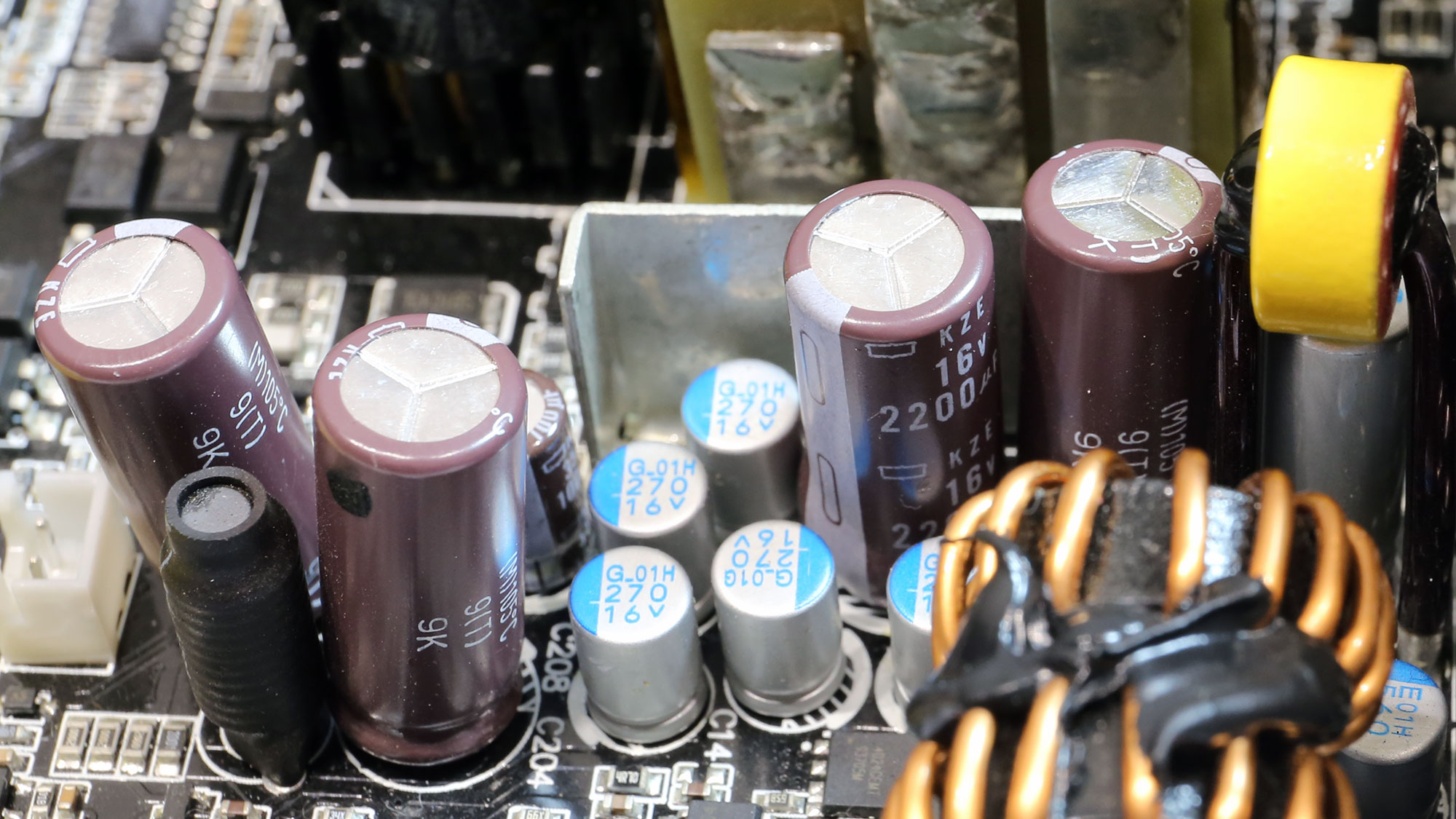
Filtering caps

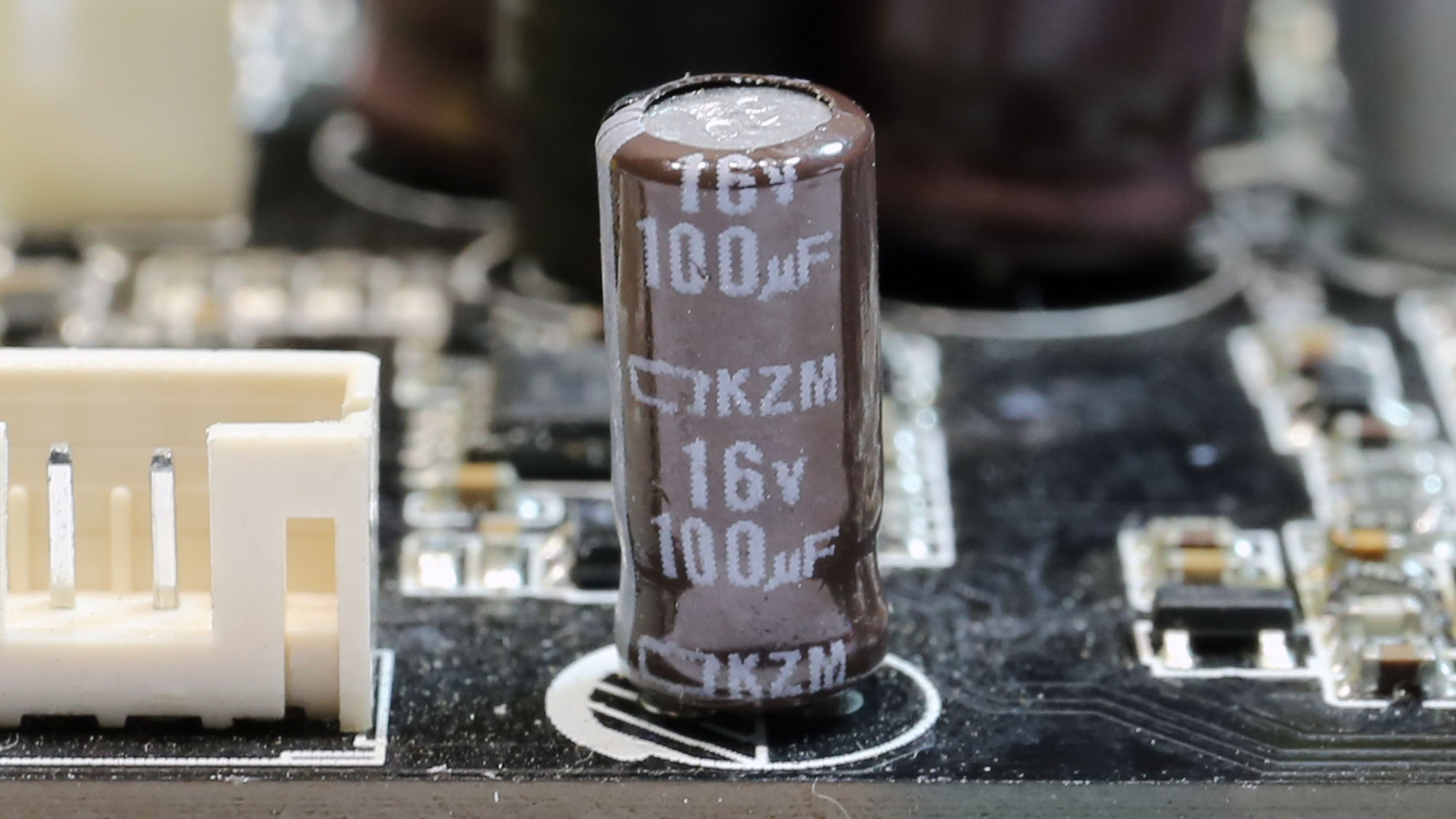
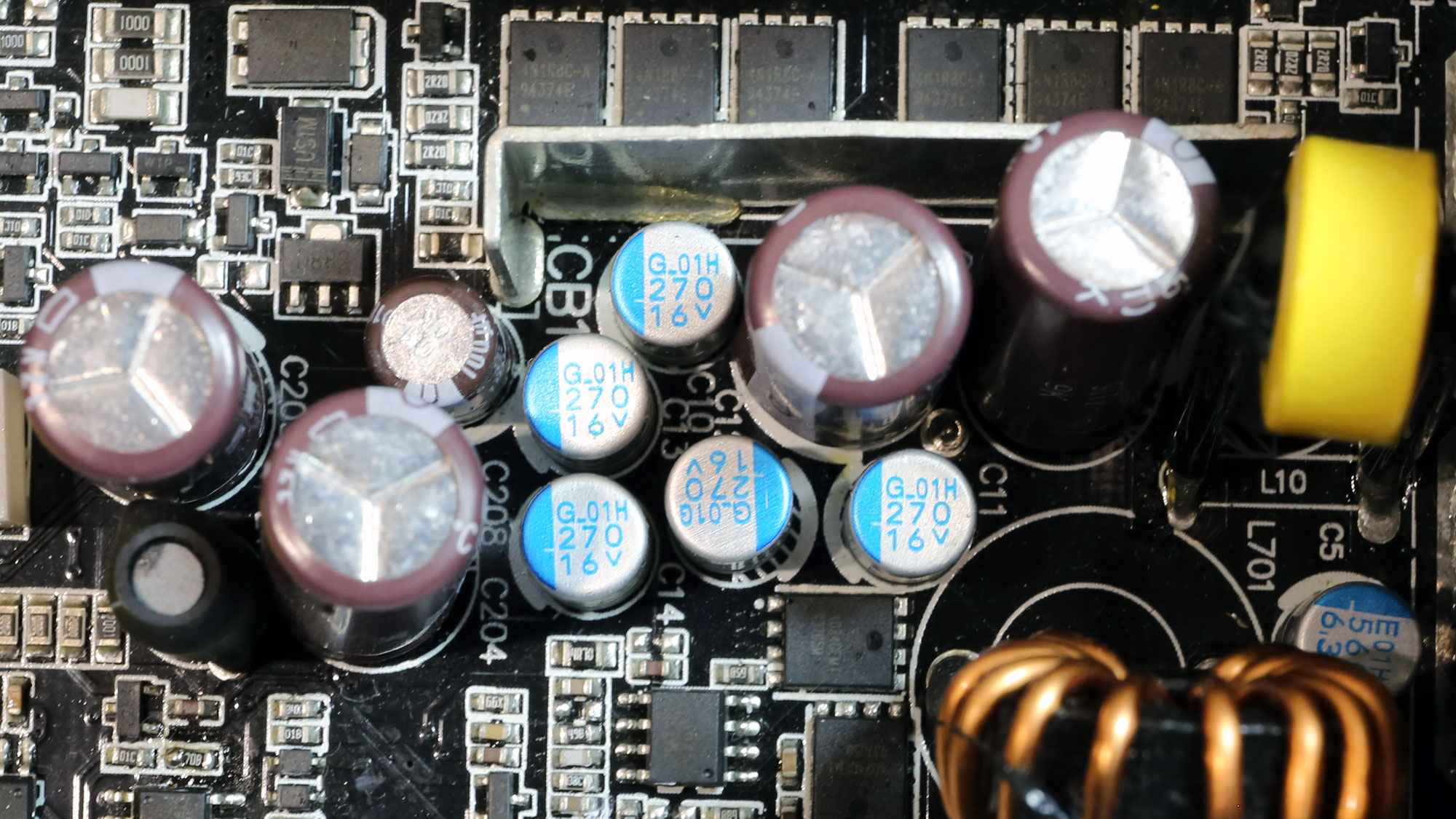
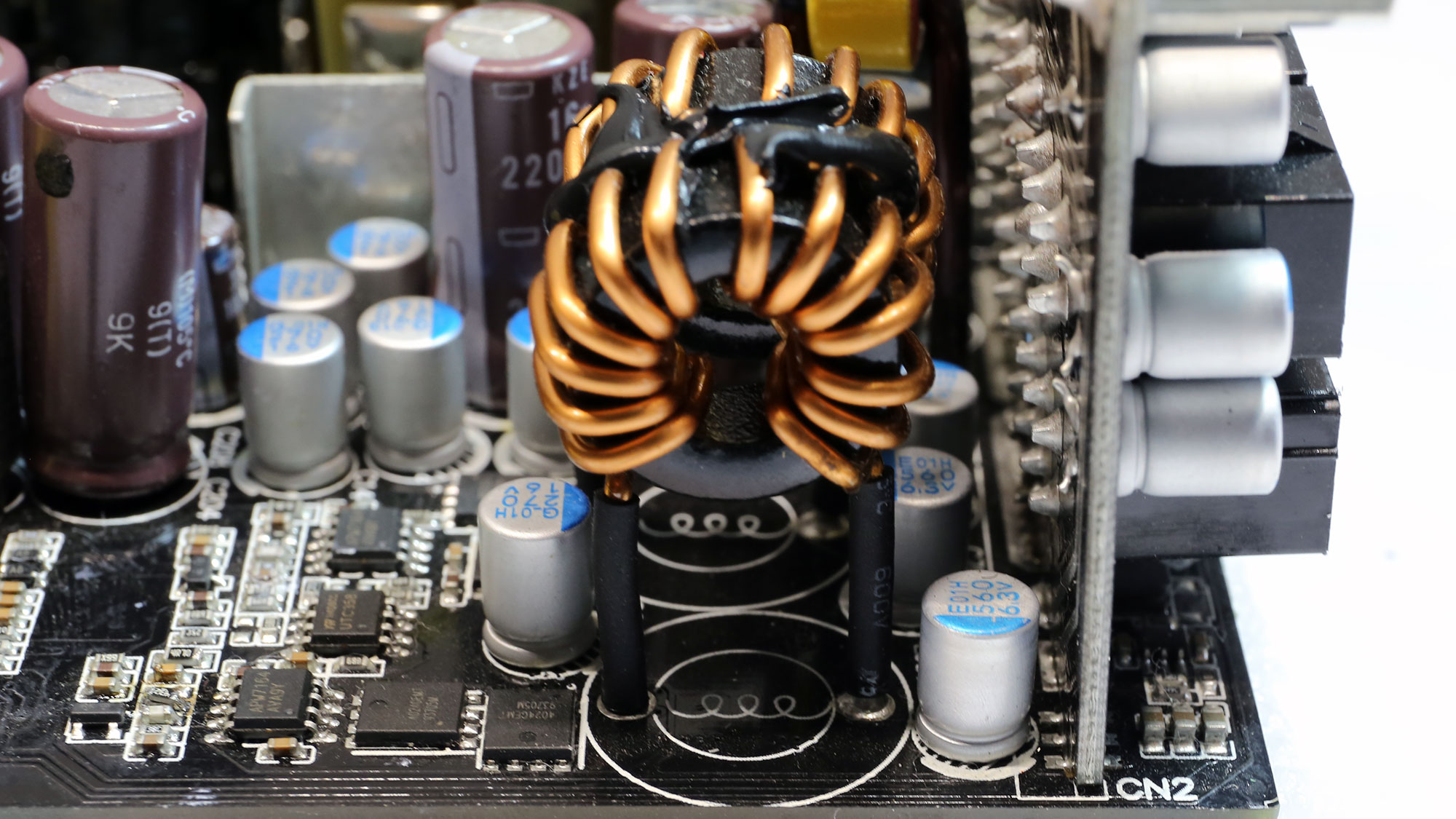
All electrolytic caps on the secondary side are provided by Chemi-Con, while NIC makes the polymer caps. HKC used quality caps to offer a longer life on this platform.
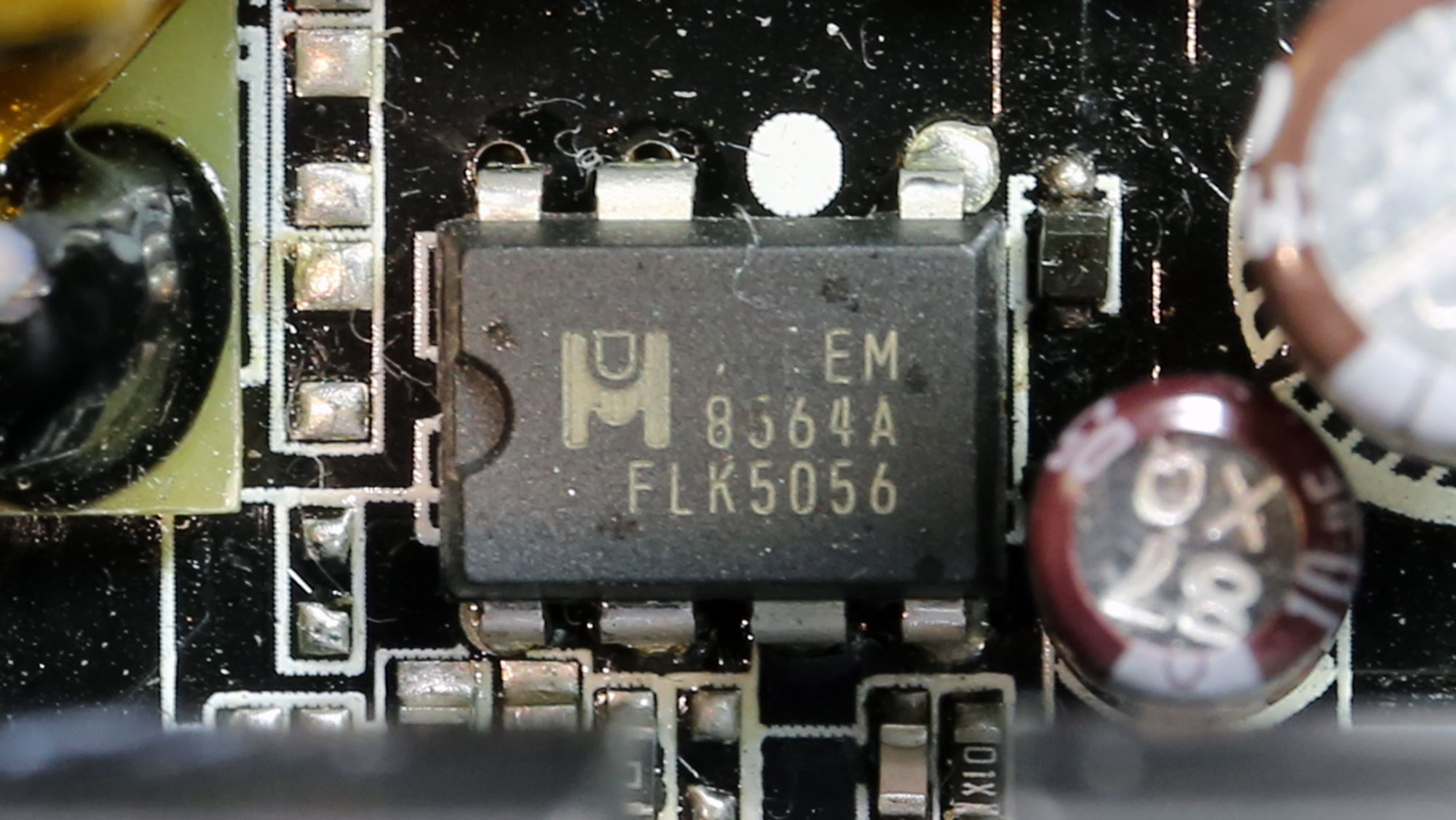
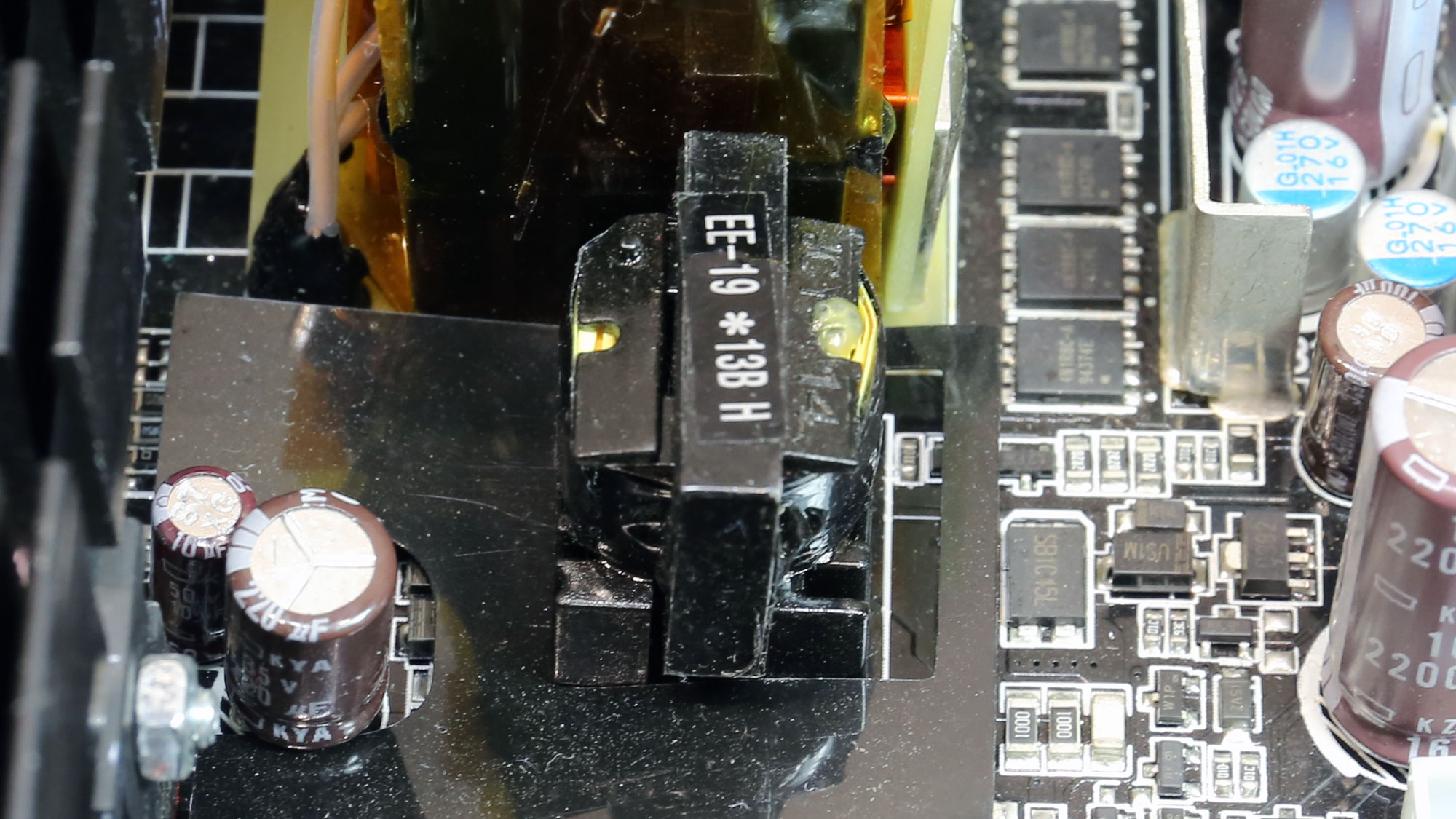
The 5VSB circuit uses an EM8564A PWM controller and a single SB1045L SBR on its secondary side.

The modular board is overloaded with sockets since this PSU has many modular cables. It also hosts eleven polymer caps.

Soldering quality
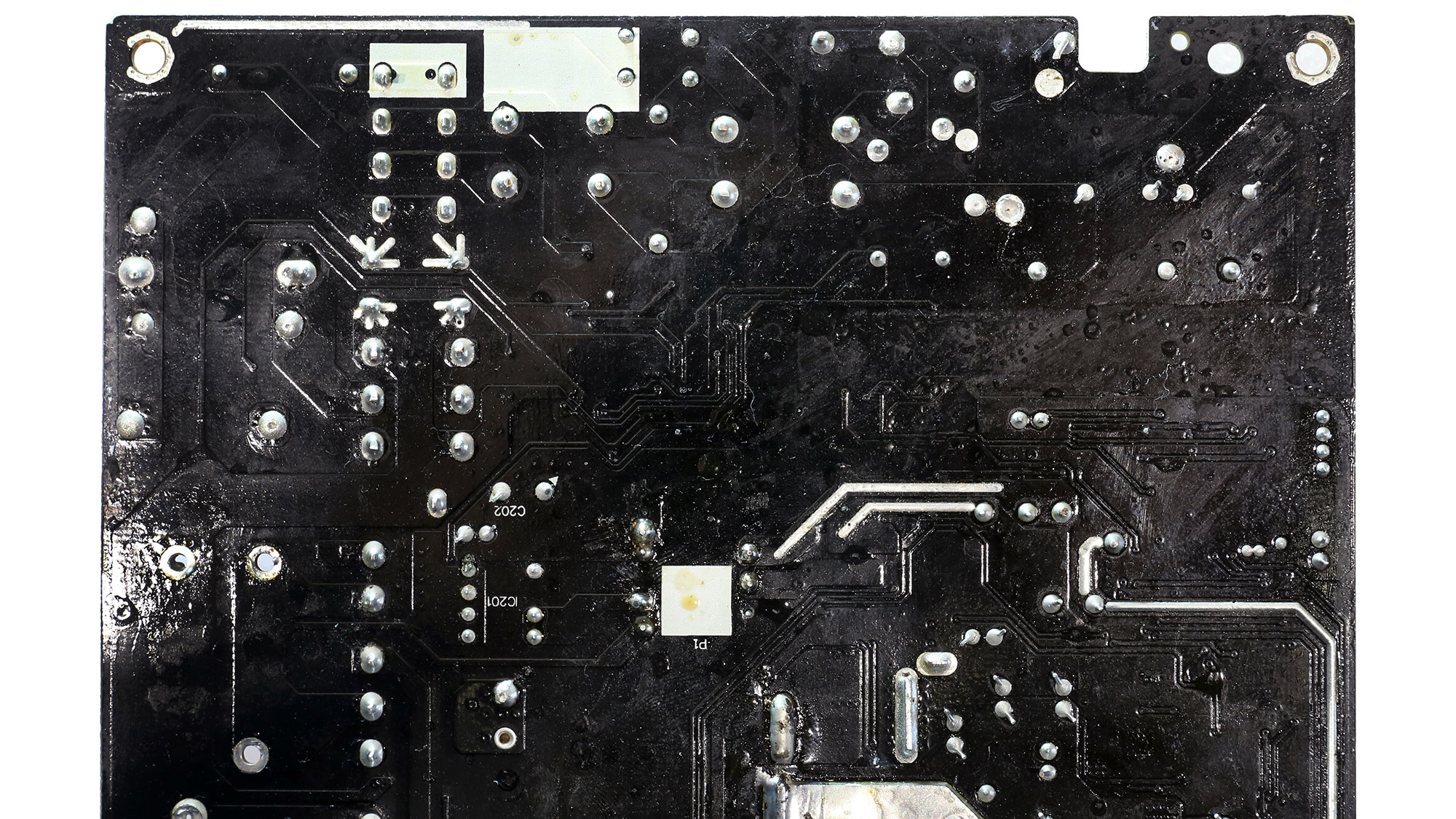
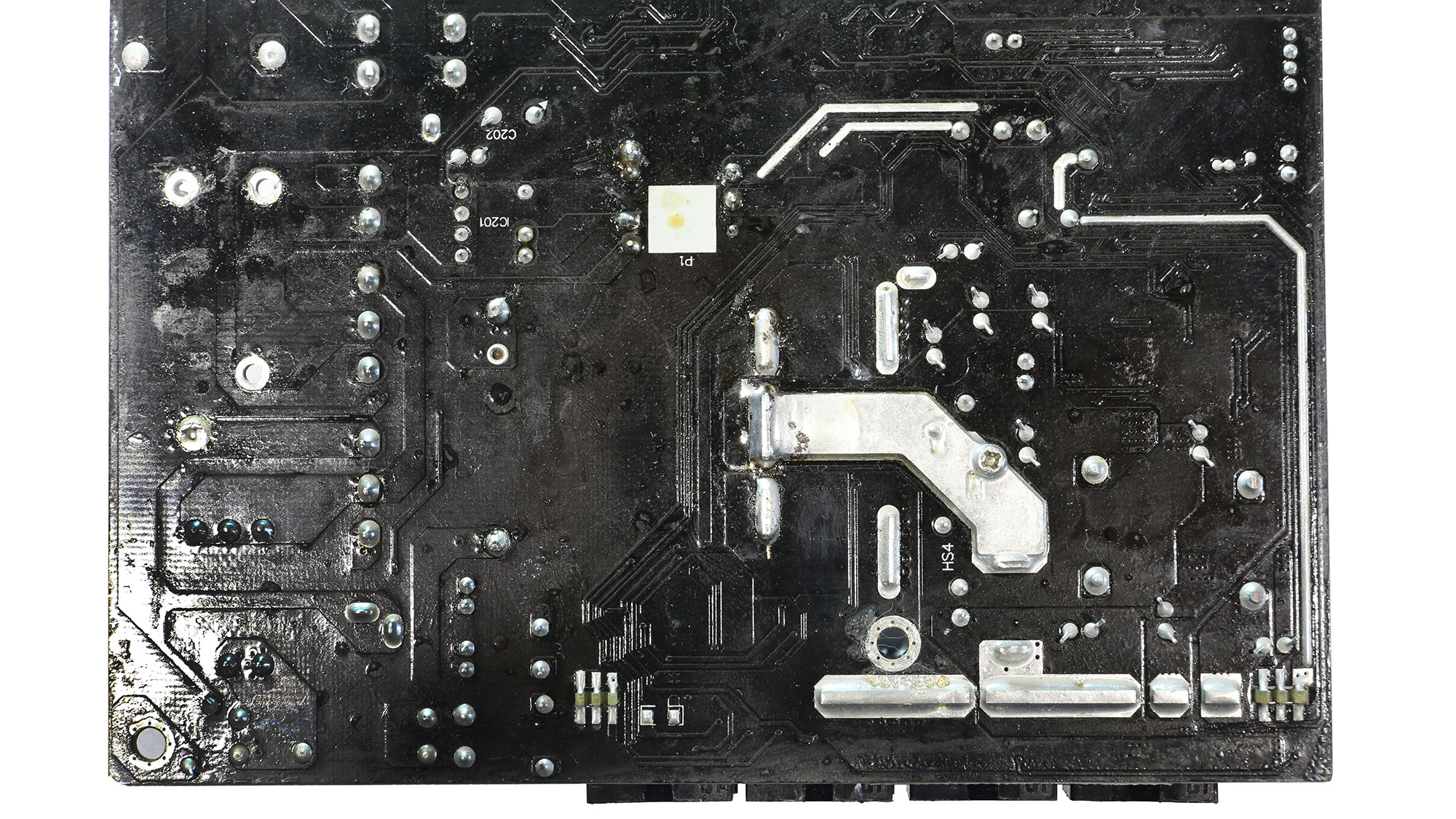
But there is not much to see on the solder side of the PCB.
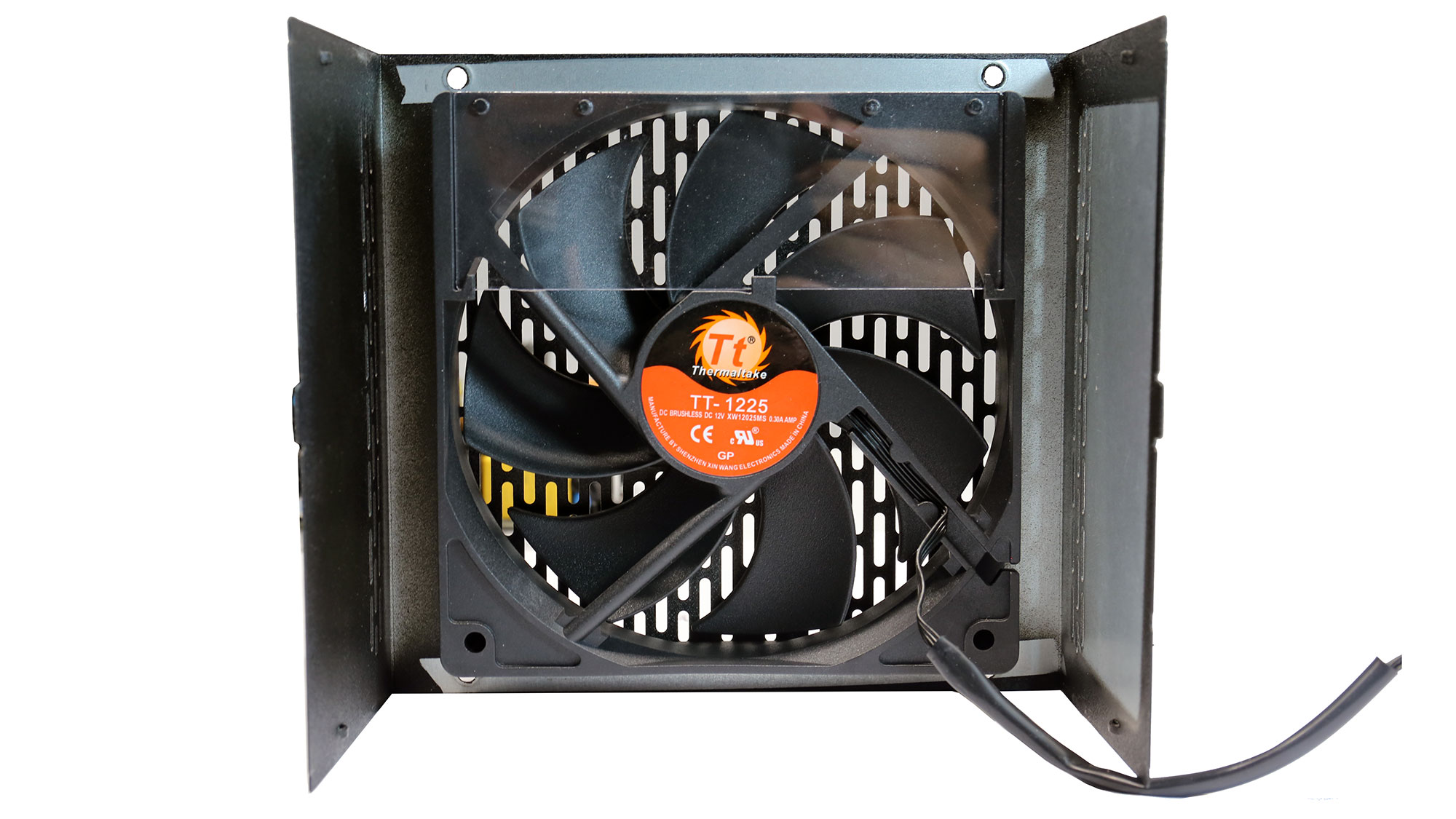
Cooling fan
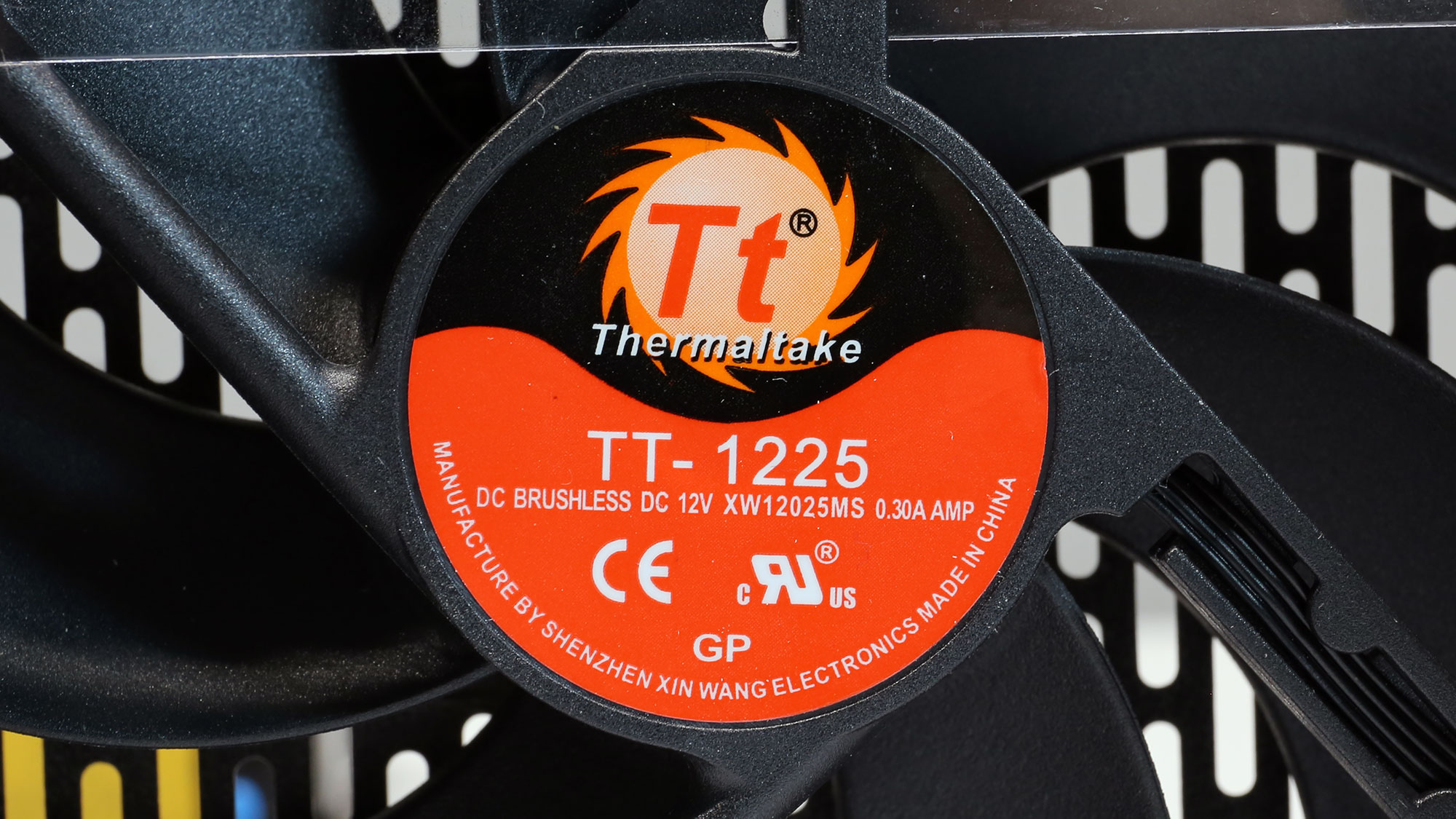
The cooling fan measures 120mm across, and it uses a hydraulic bearing, so it will have a long life as long as you don't stress it with high operating temperatures (greater than 40 degrees Celsius).
MORE: Best Power Supplies
MORE: How We Test Power Supplies
MORE: All Power Supply Content
Current page: Specifications and Part Analysis
Next Page Load Regulation, Hold-Up Time, Inrush & Leakage Current, Efficiency and Noise
Aris Mpitziopoulos is a contributing editor at Tom's Hardware, covering PSUs.